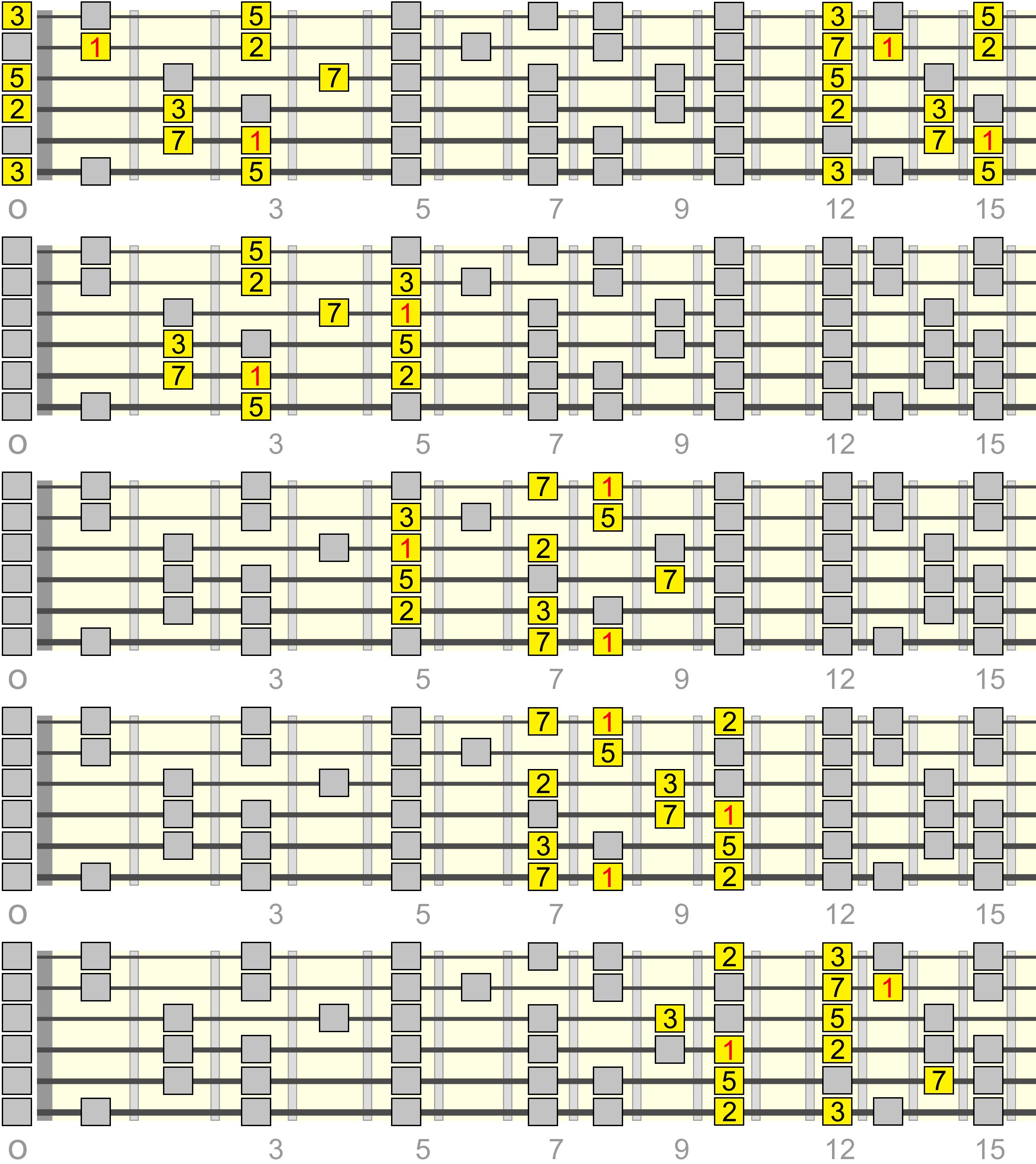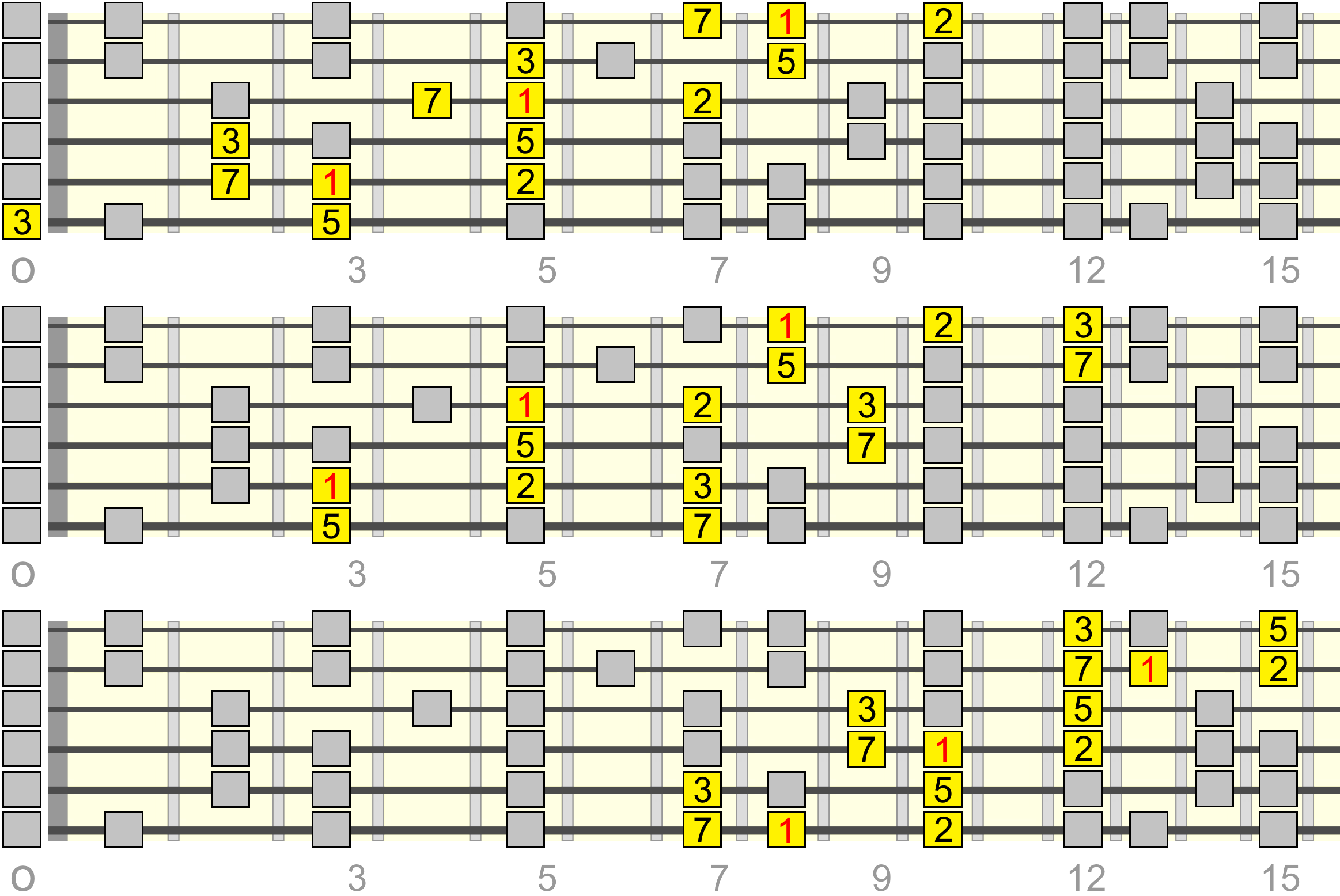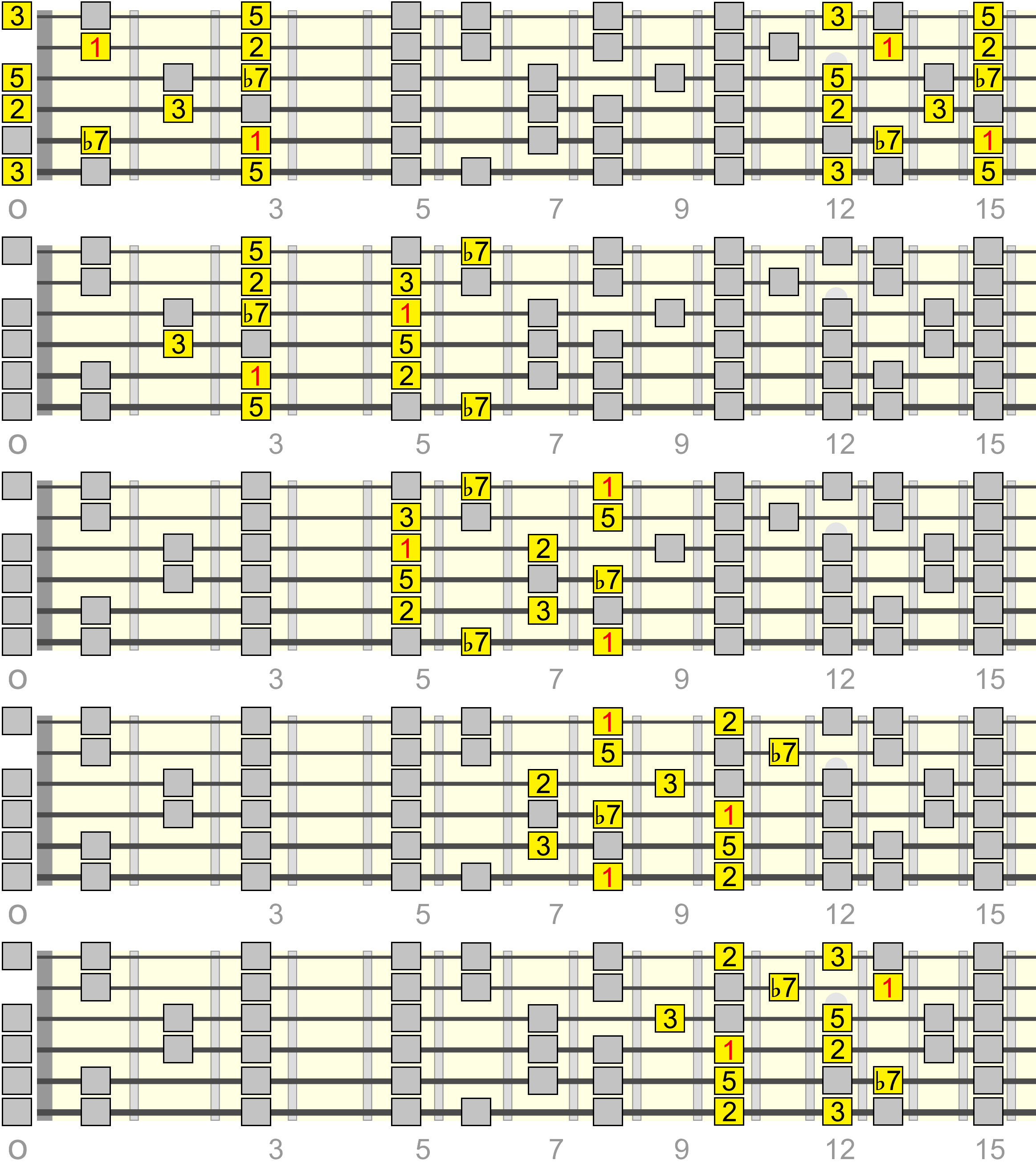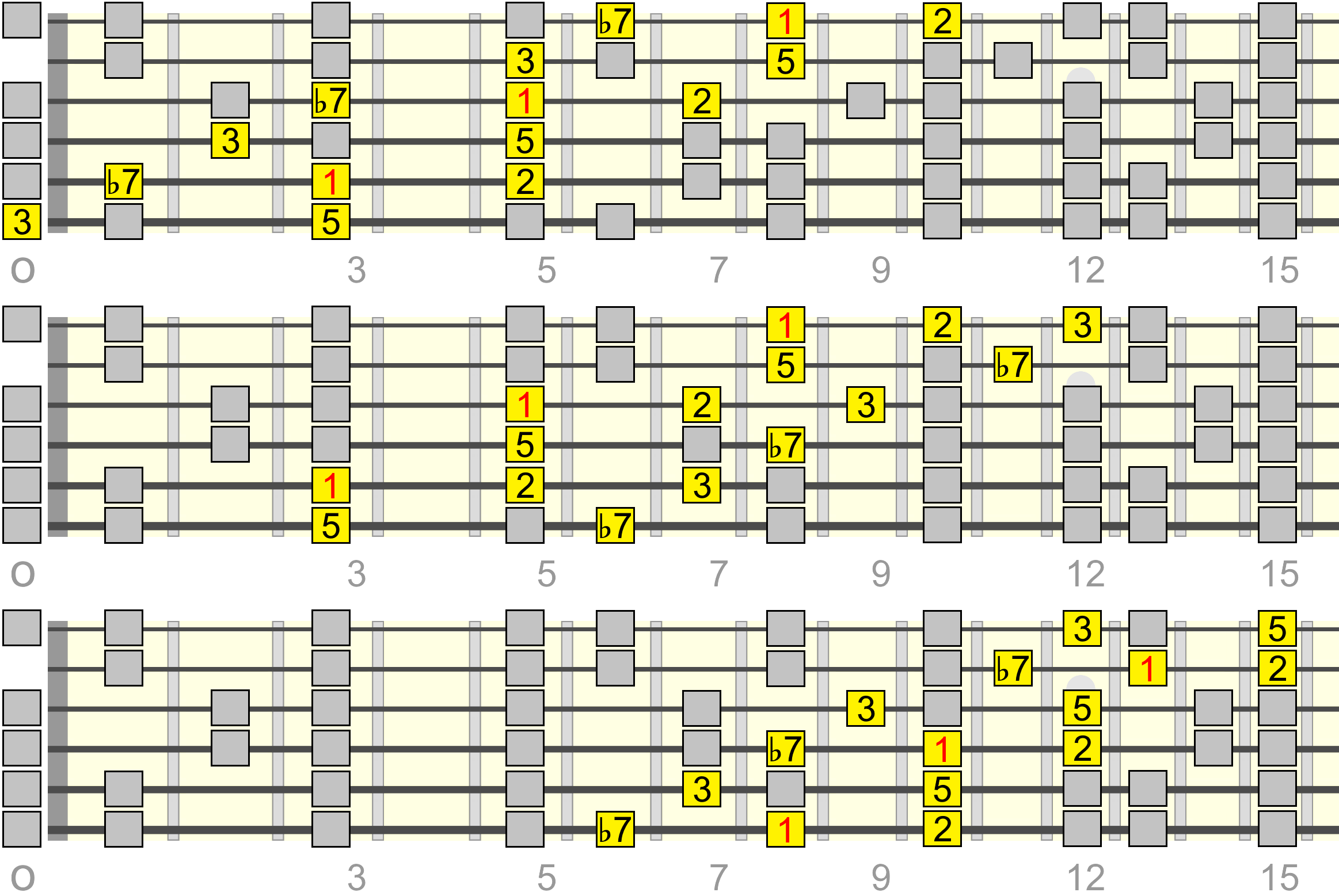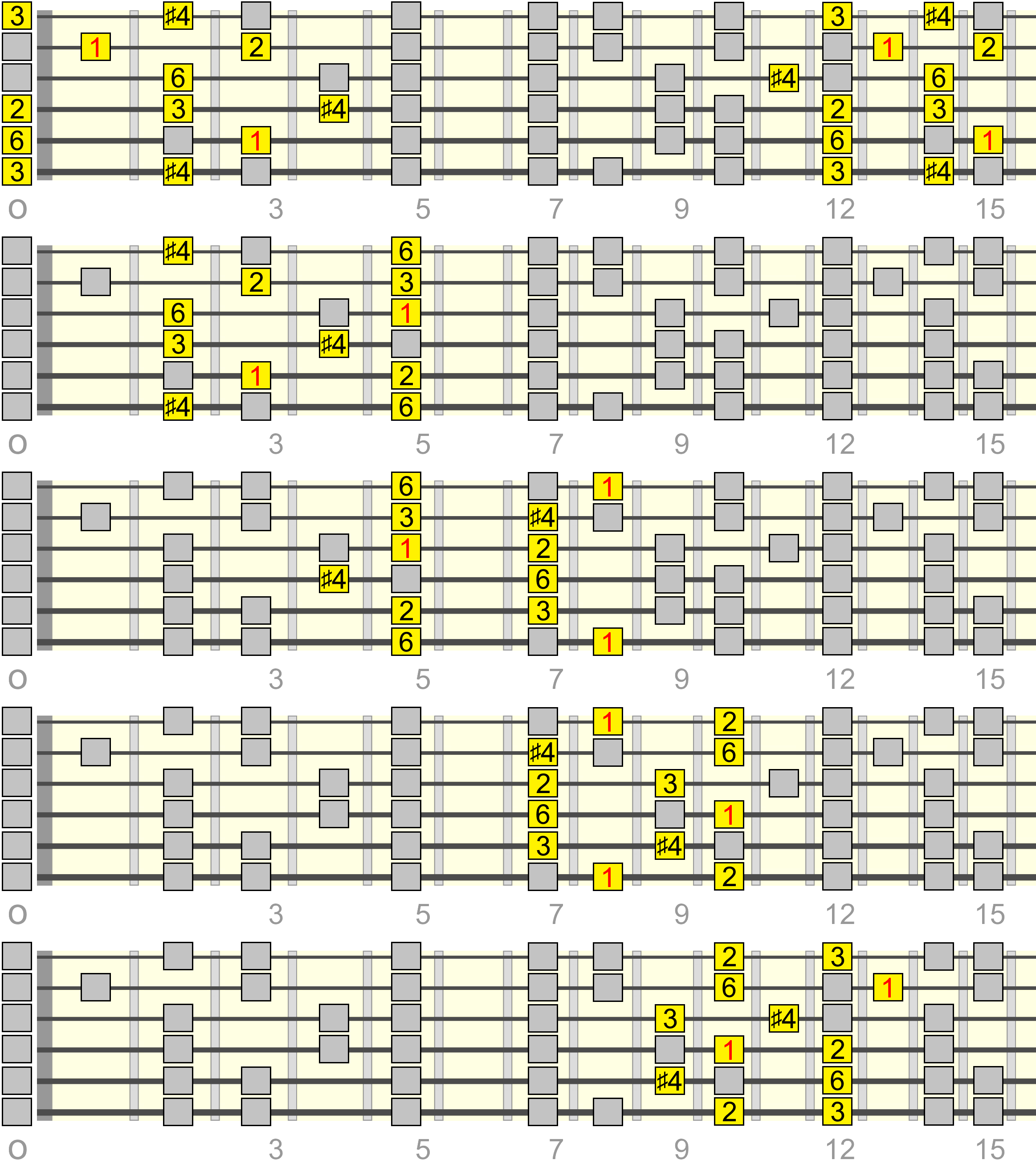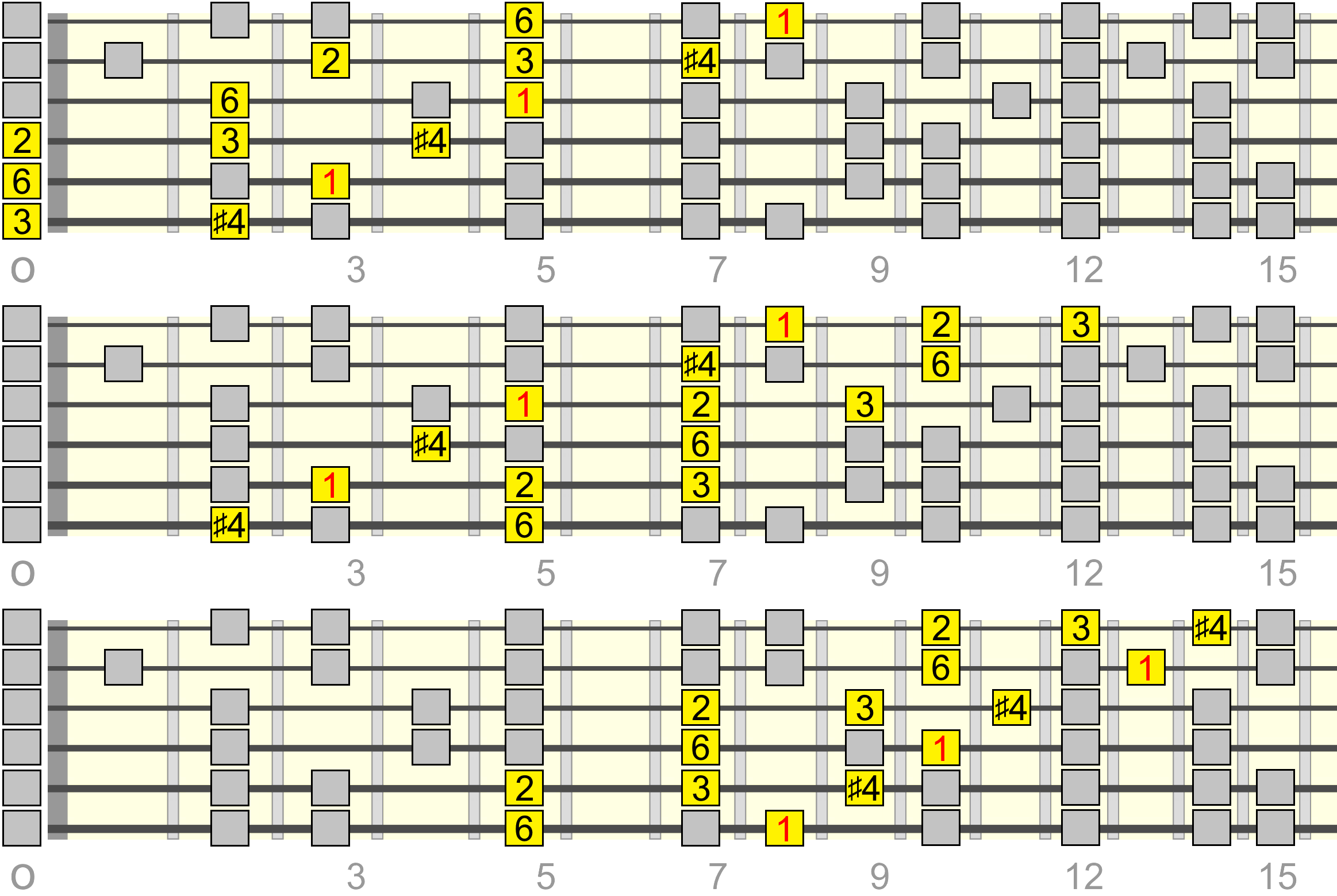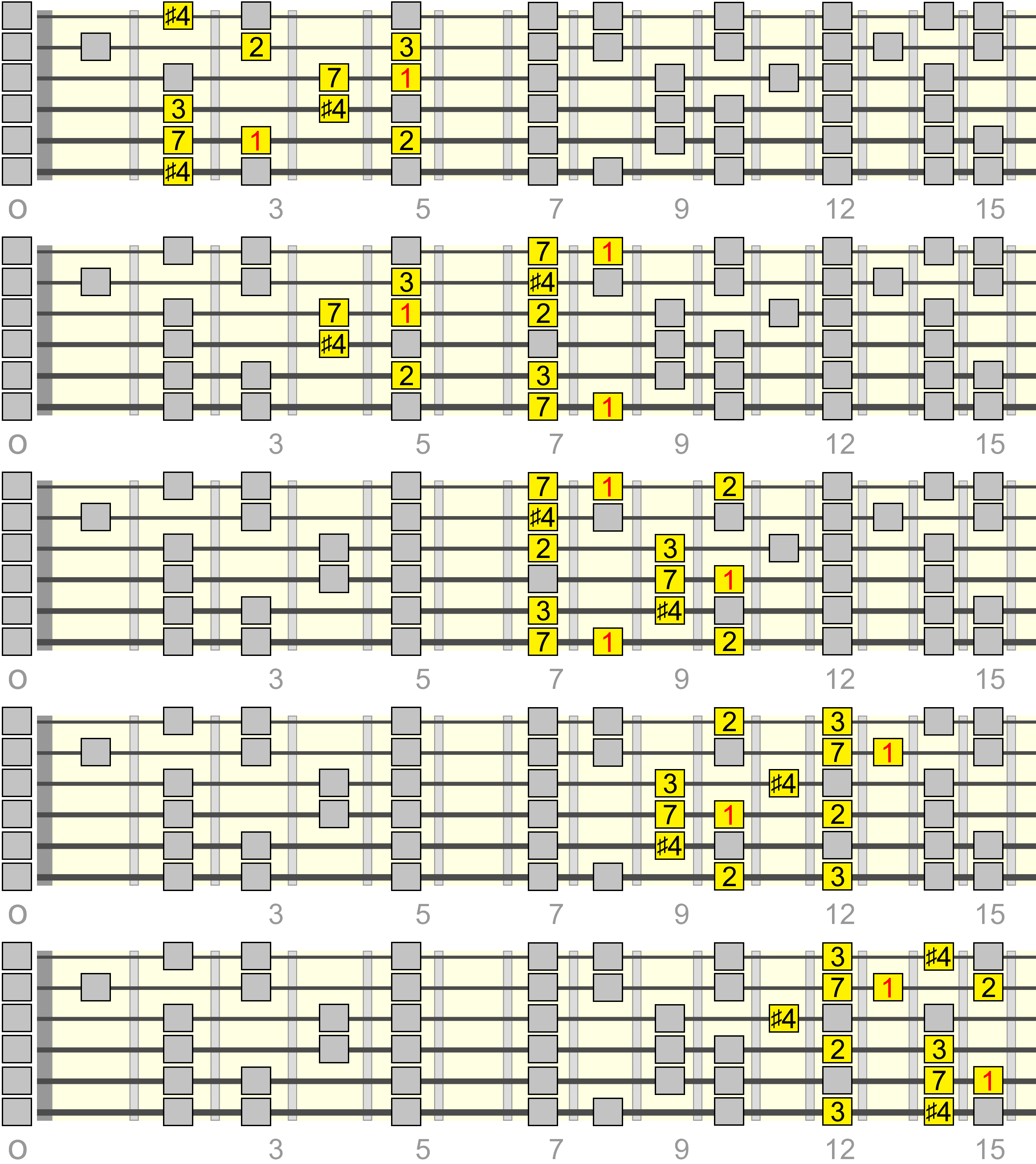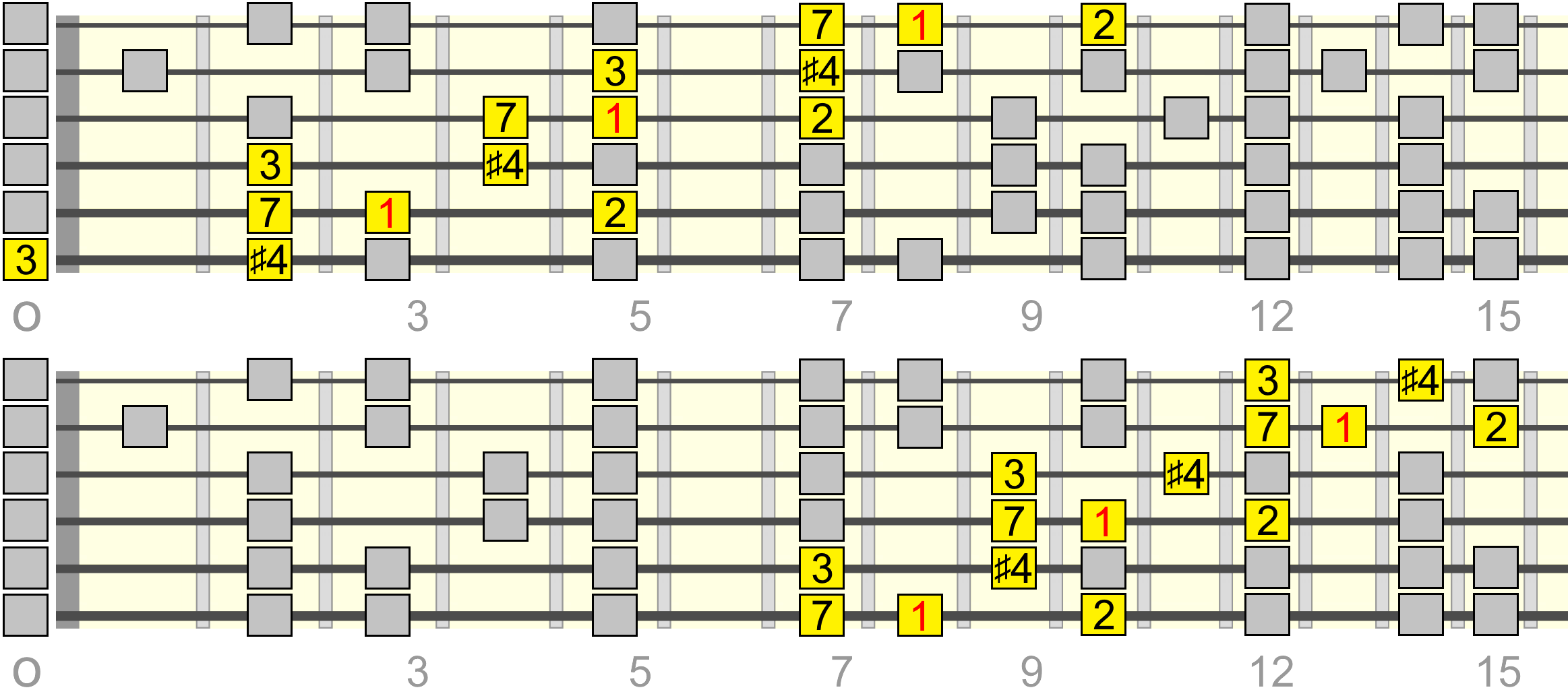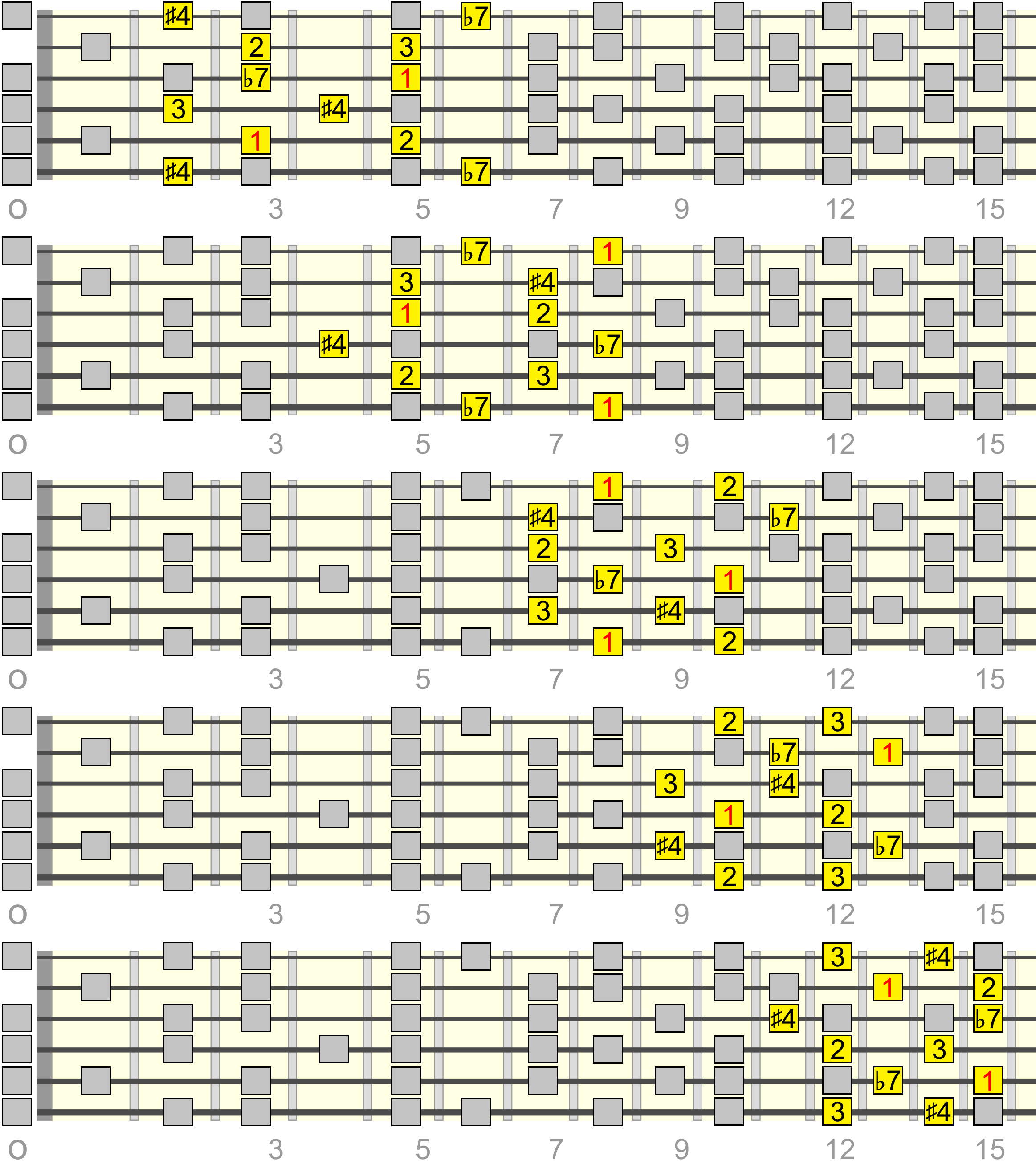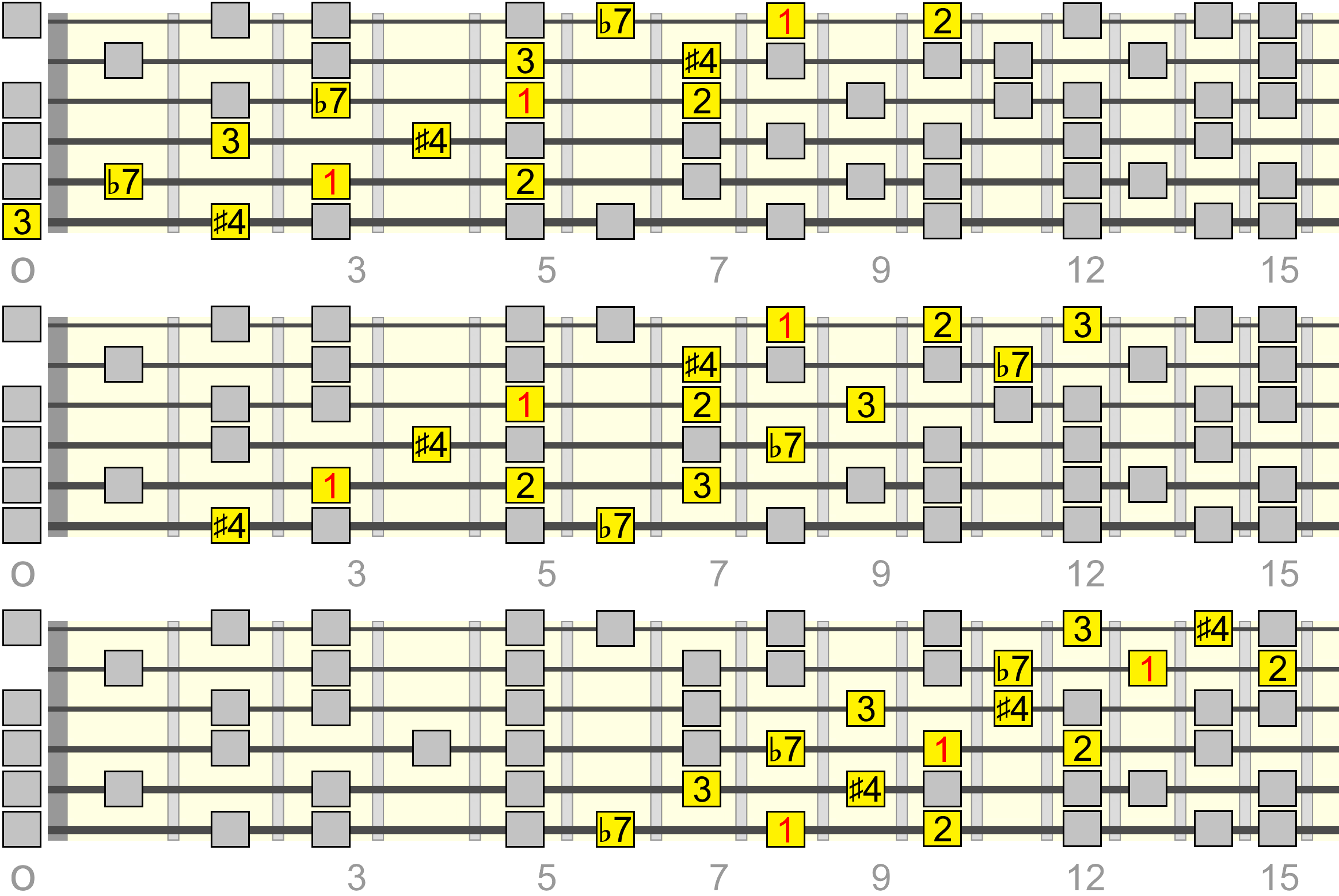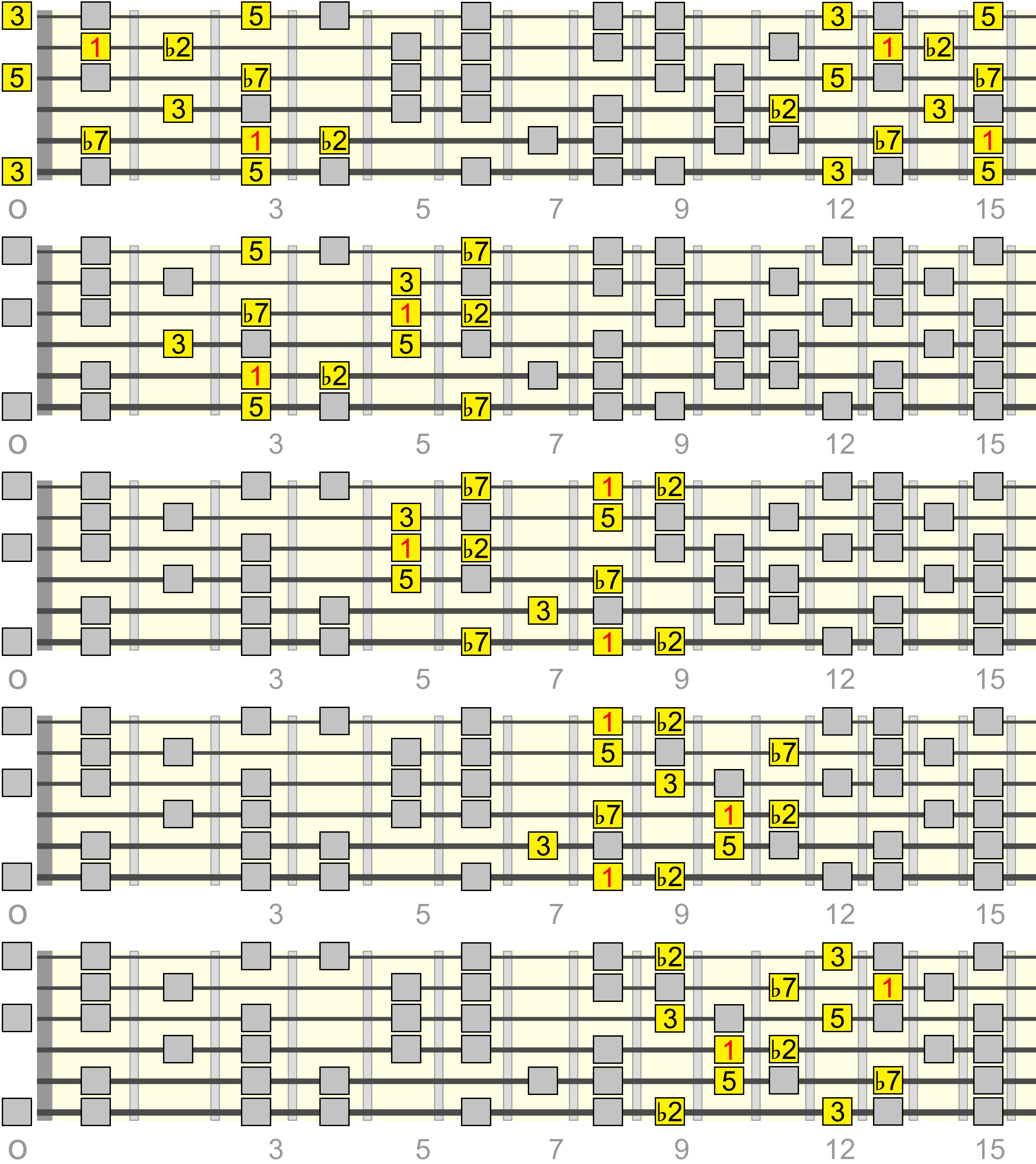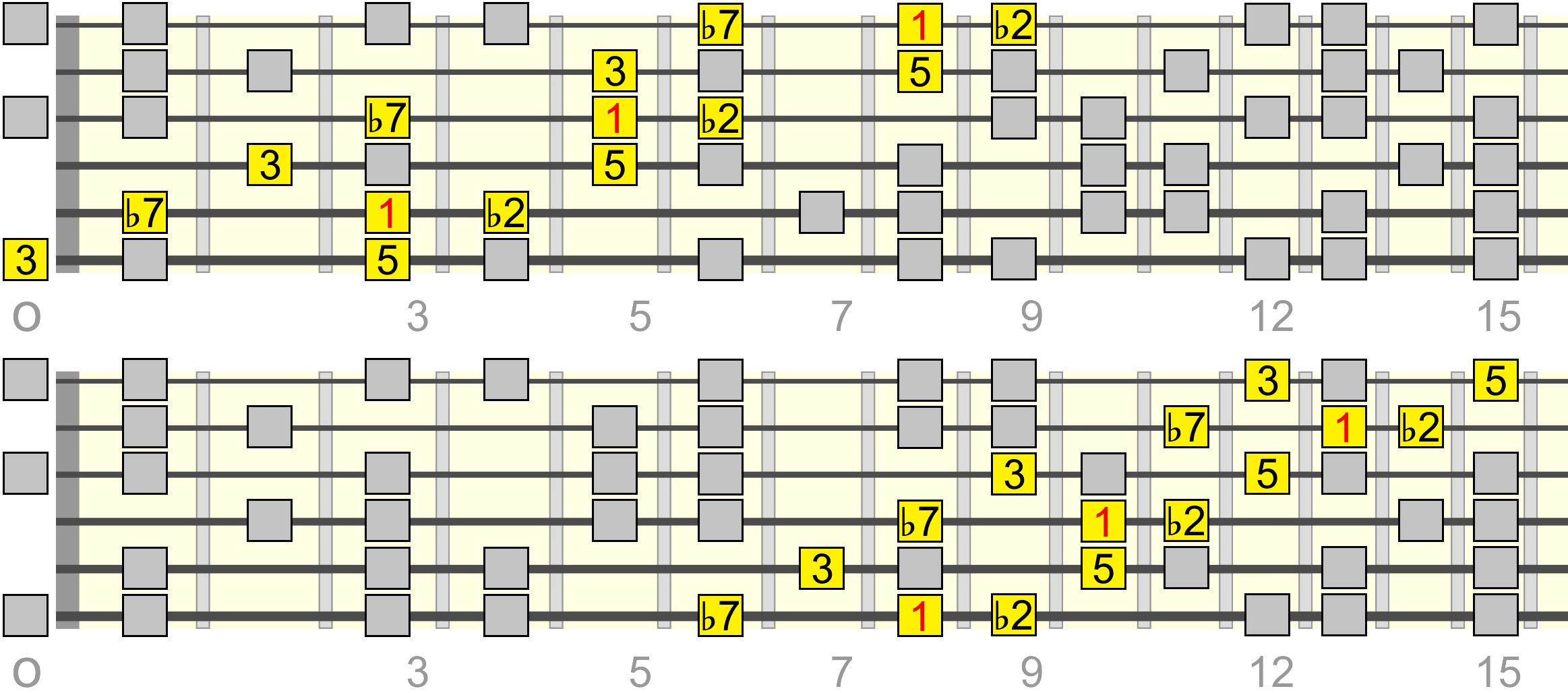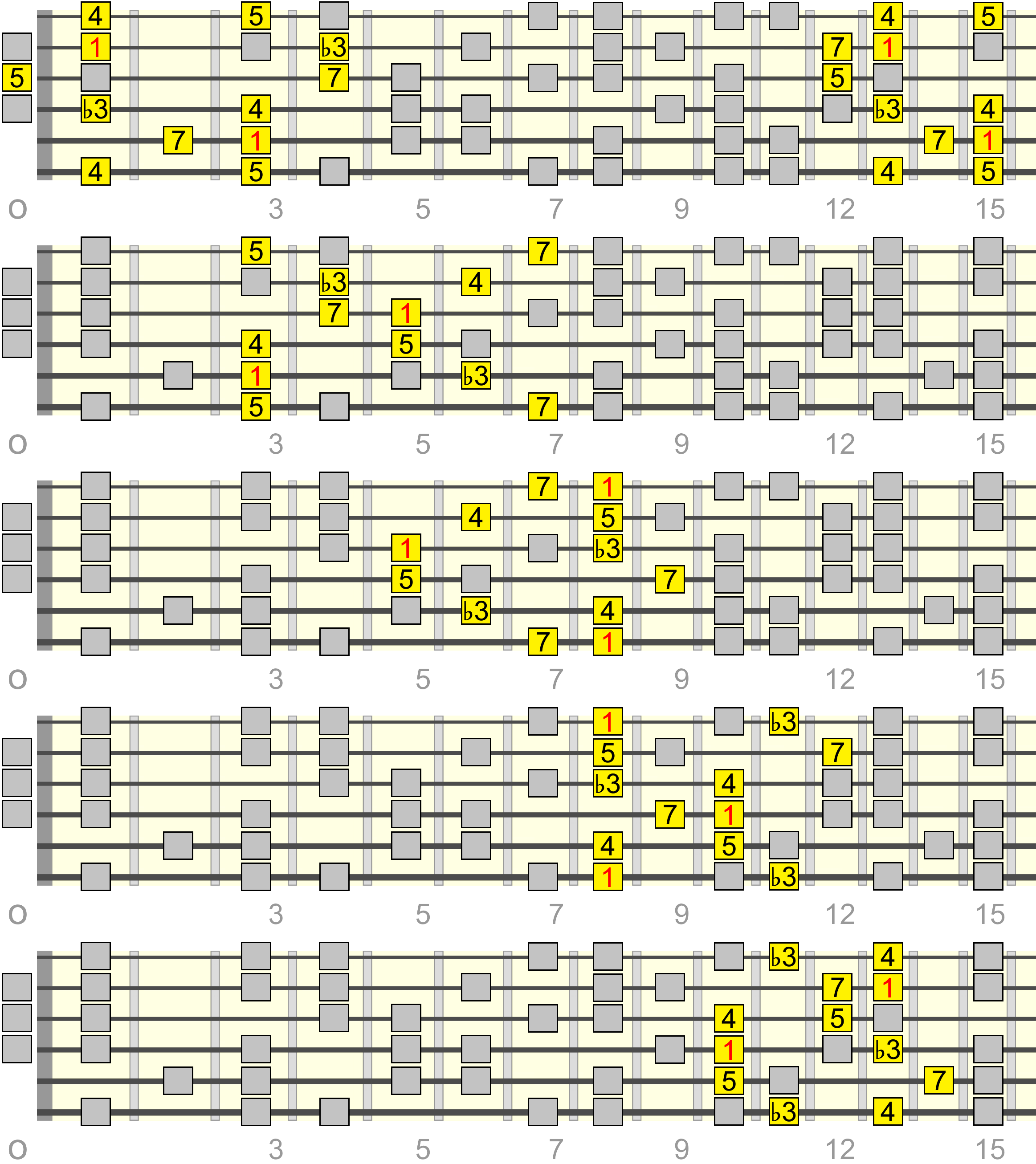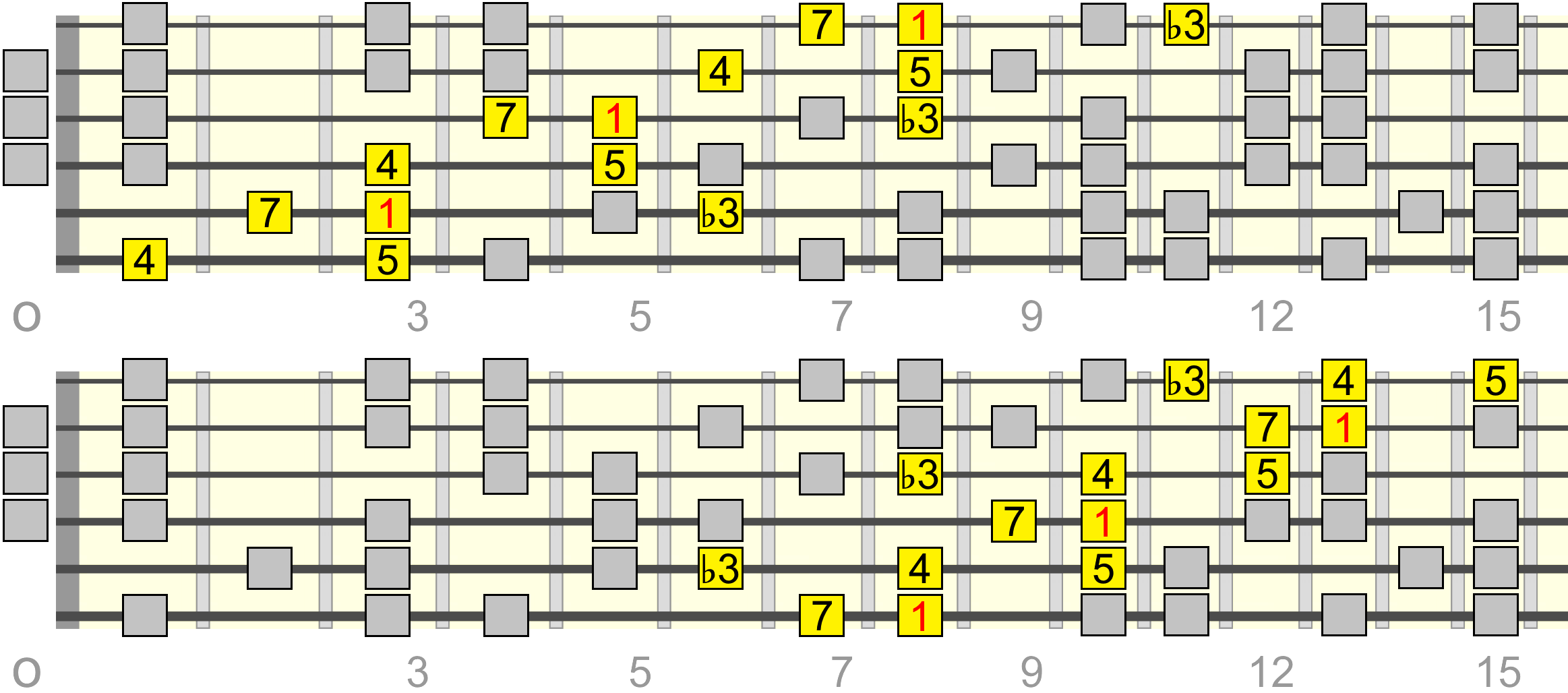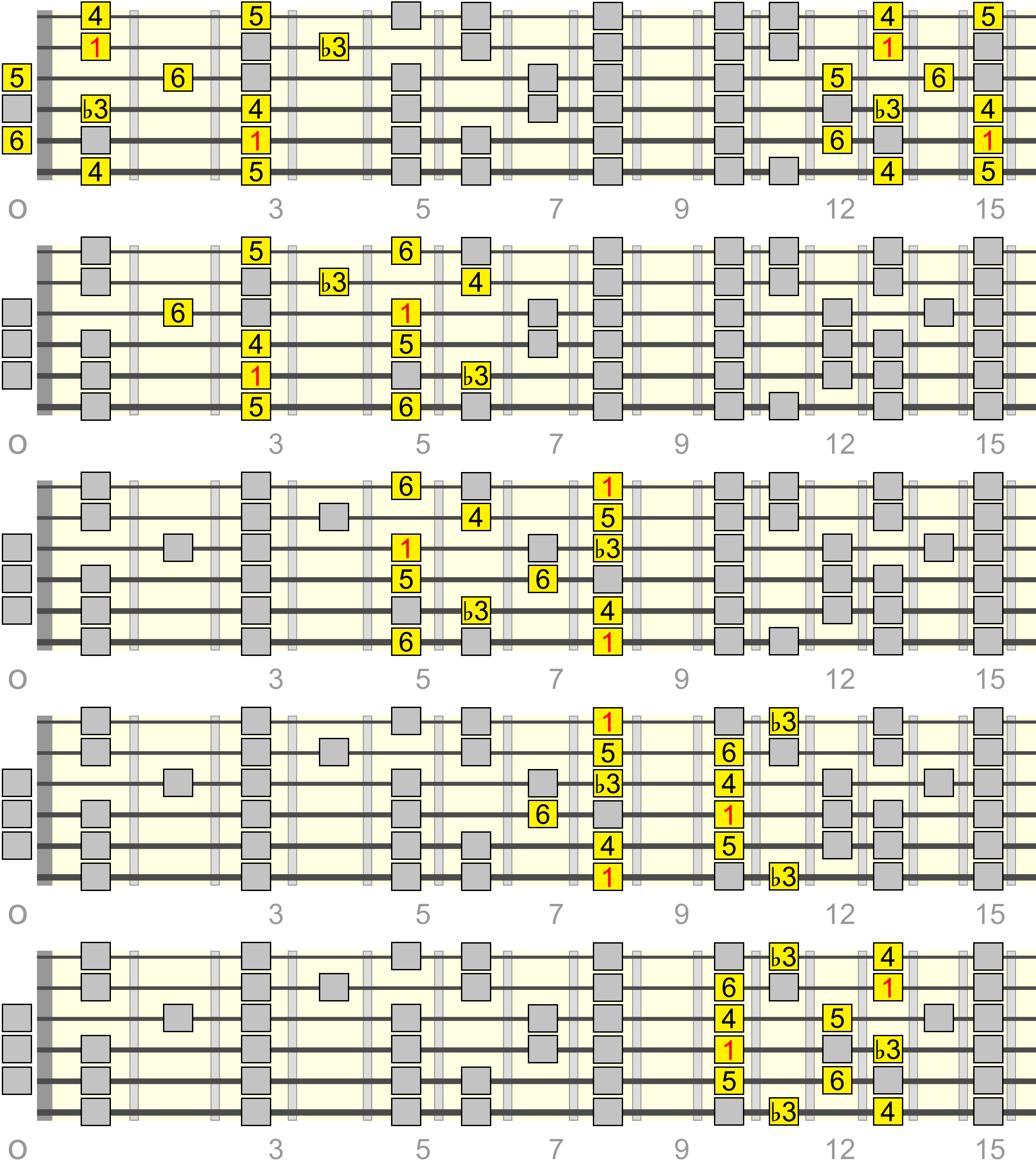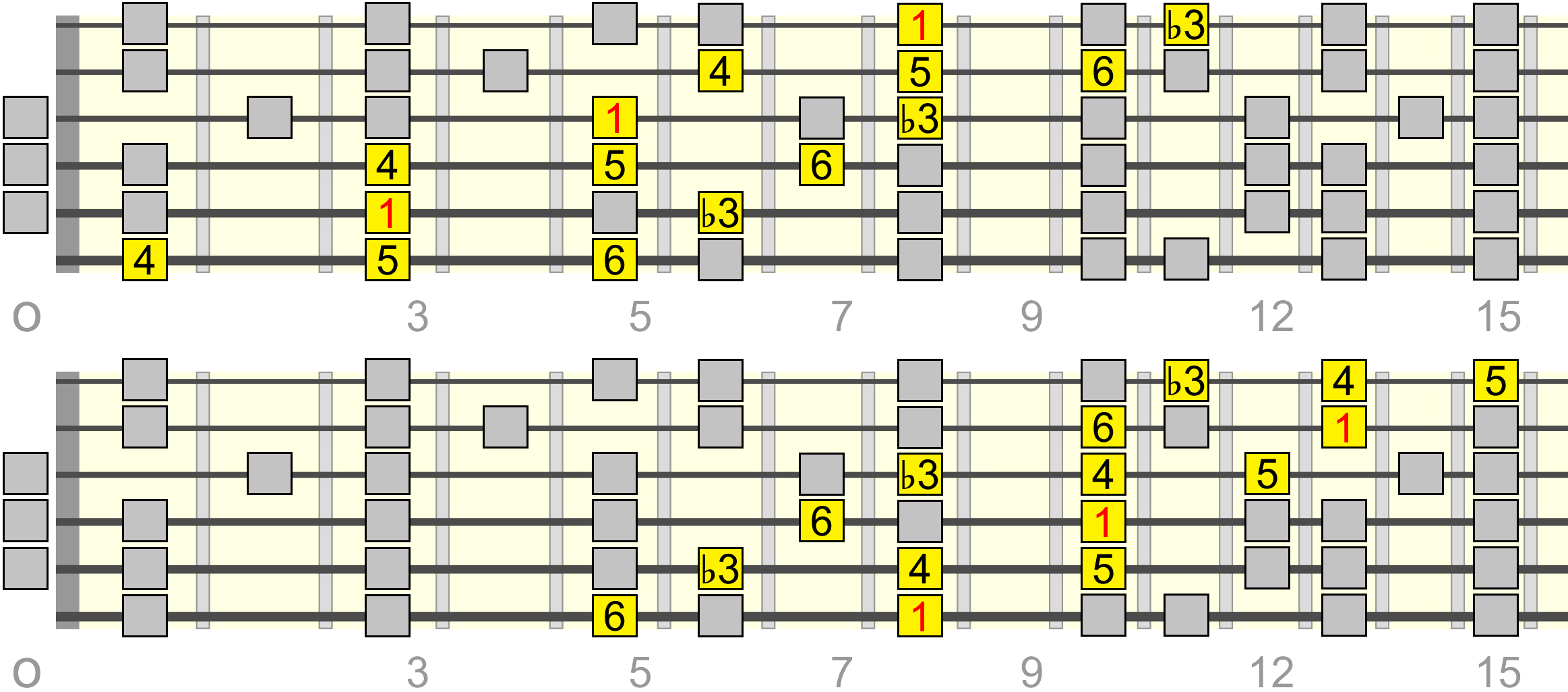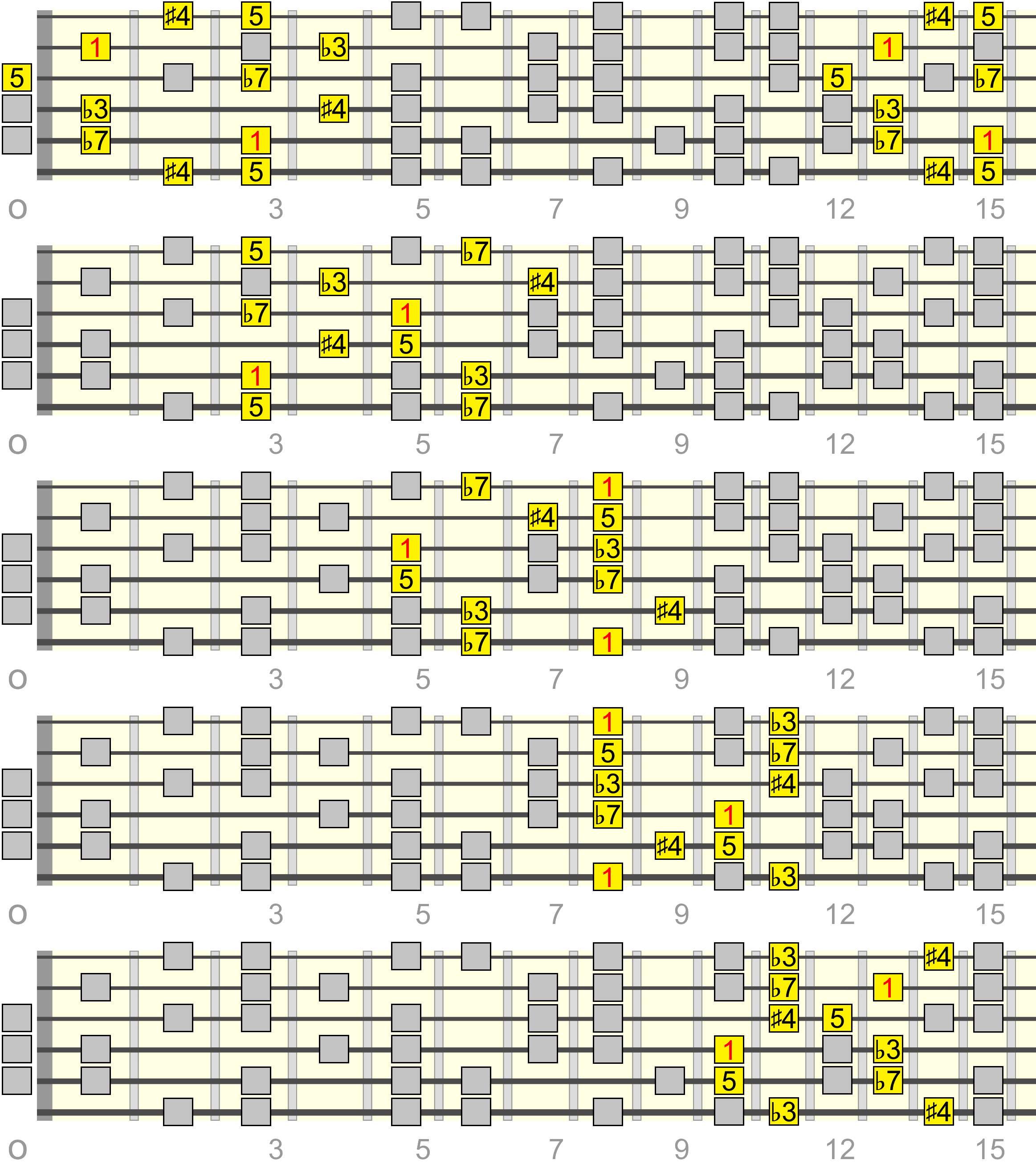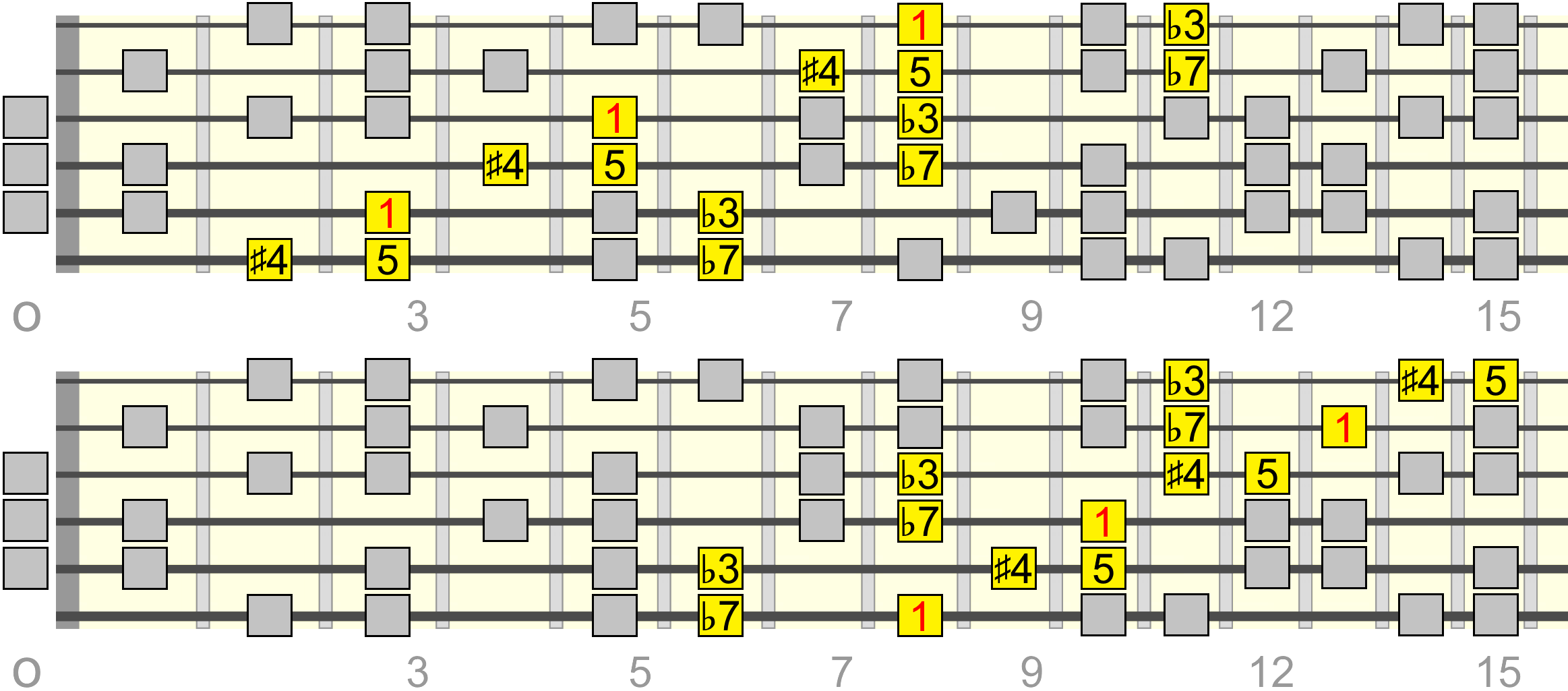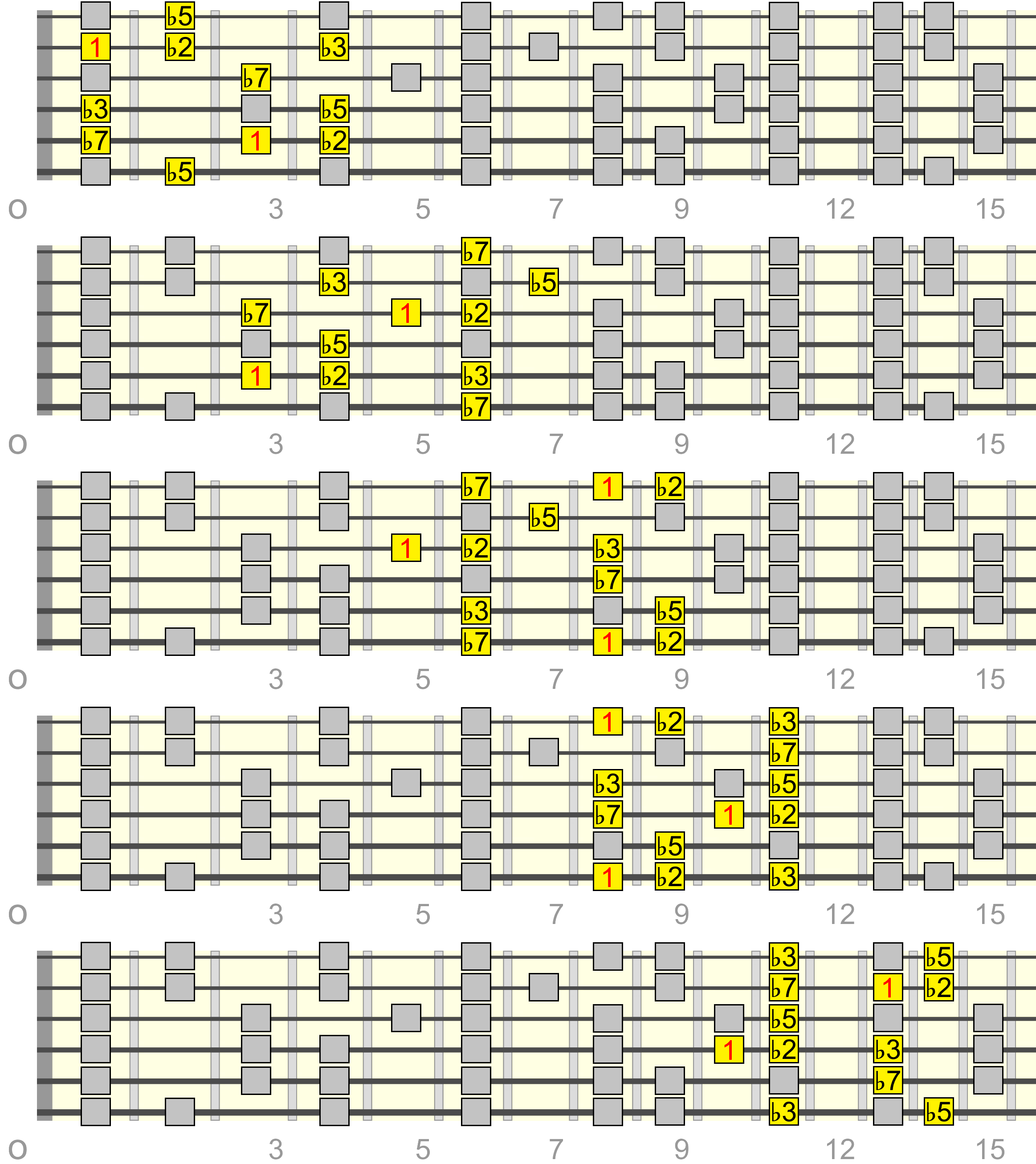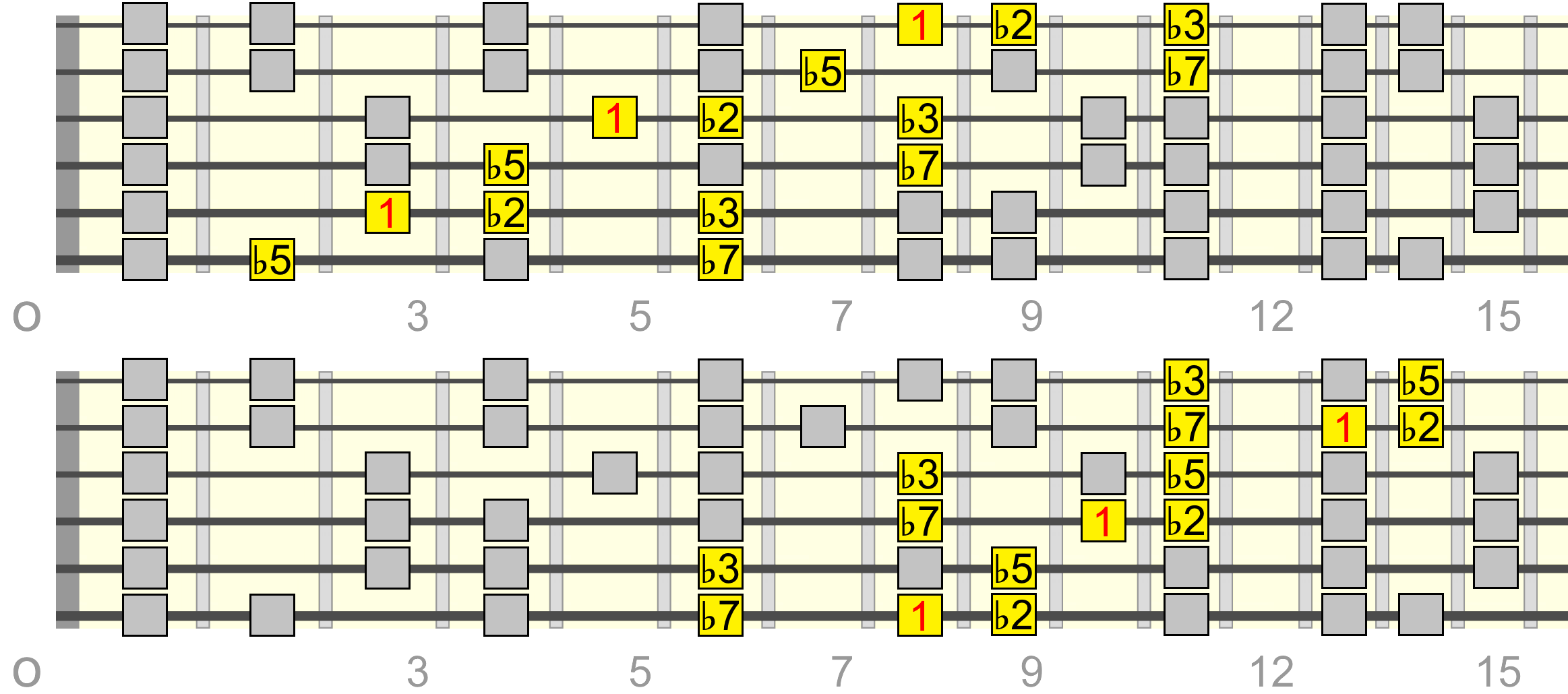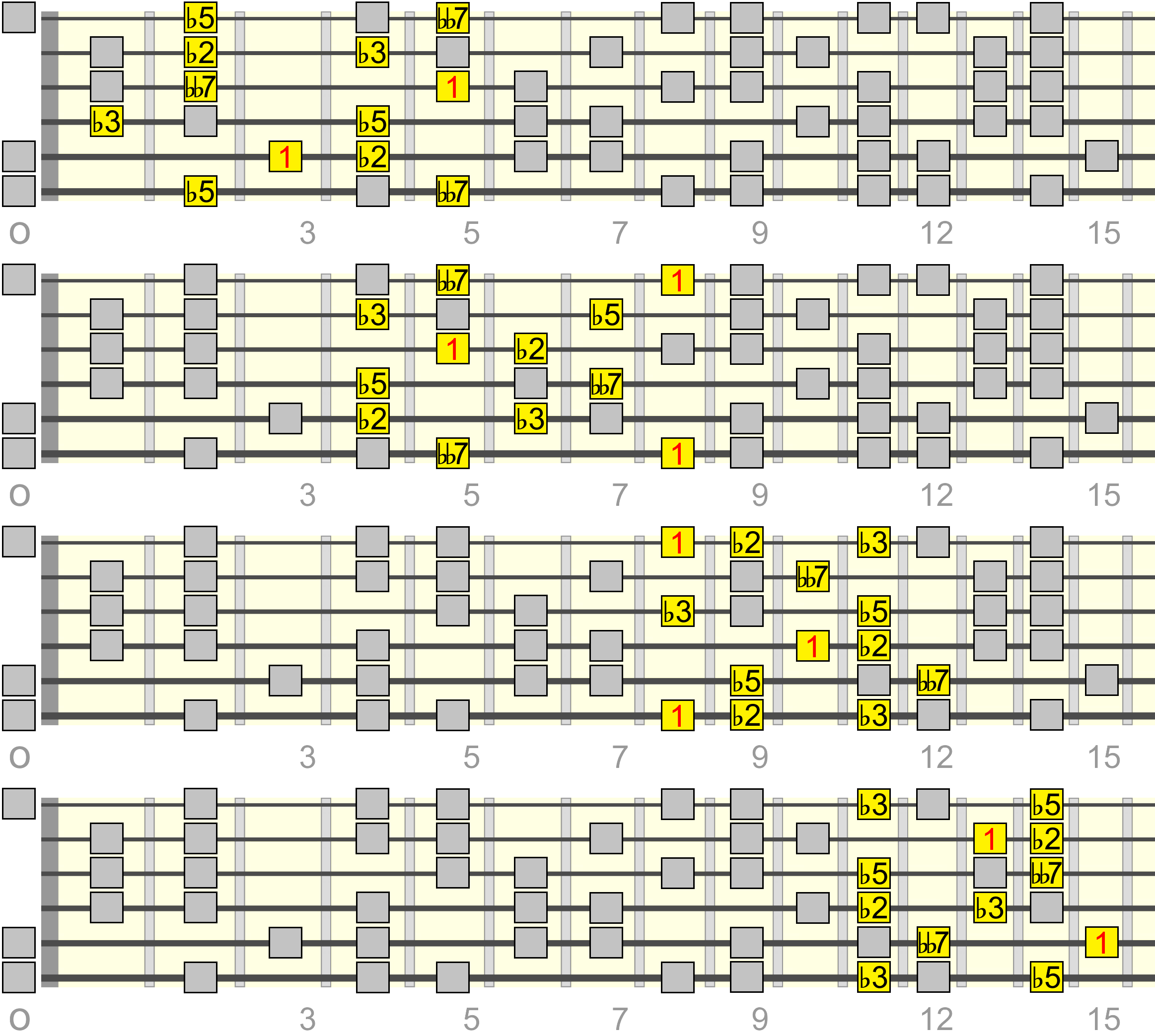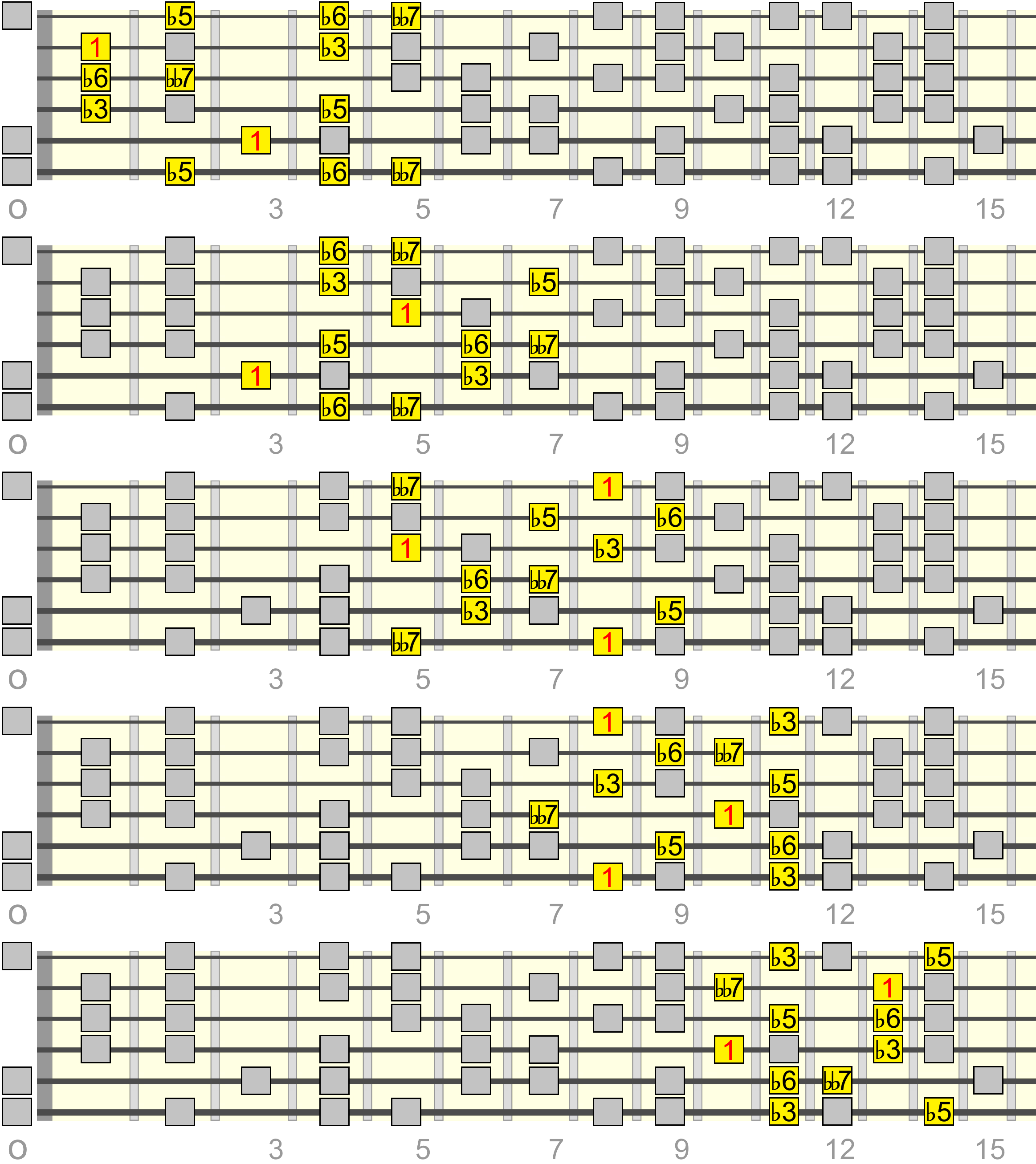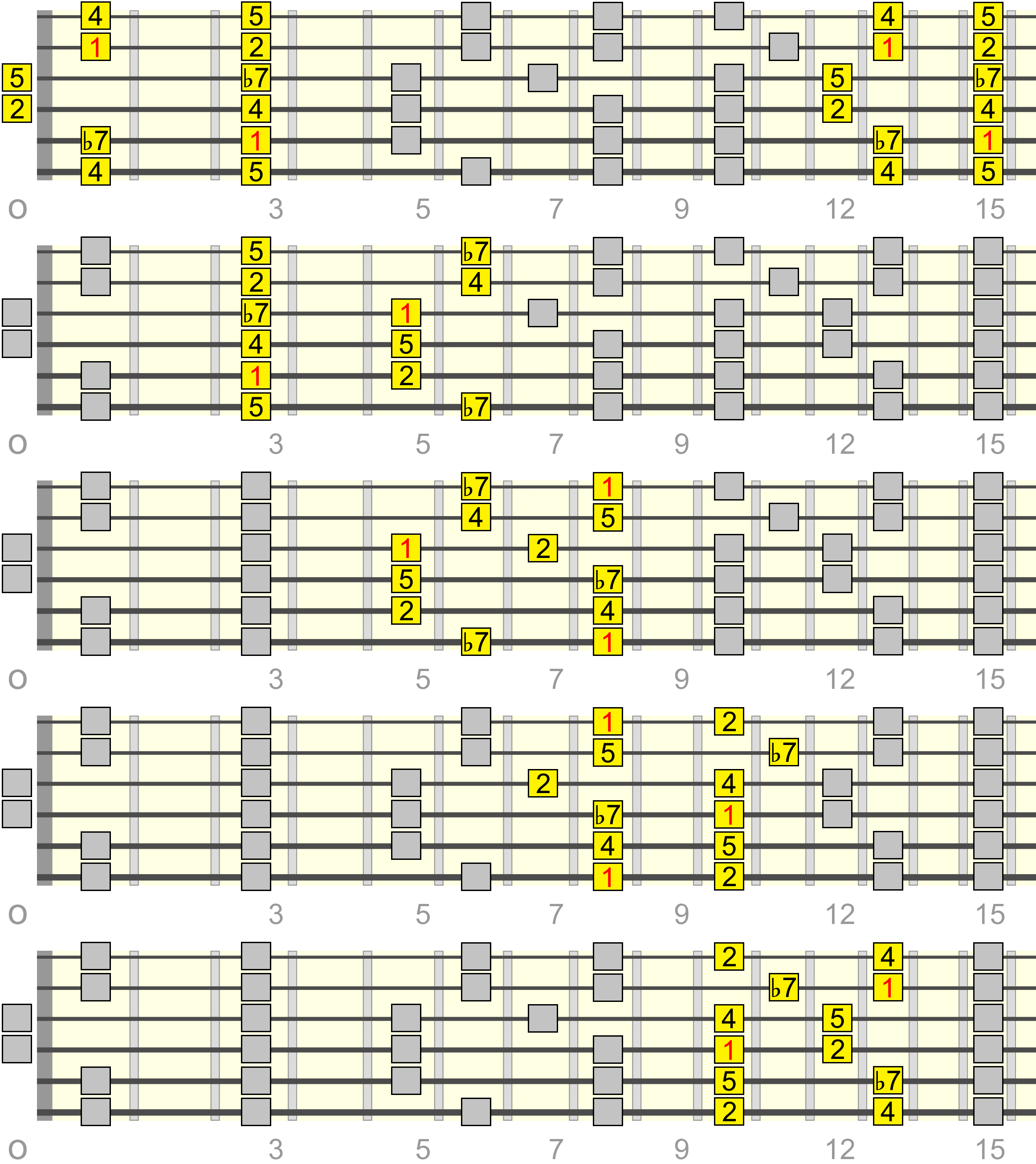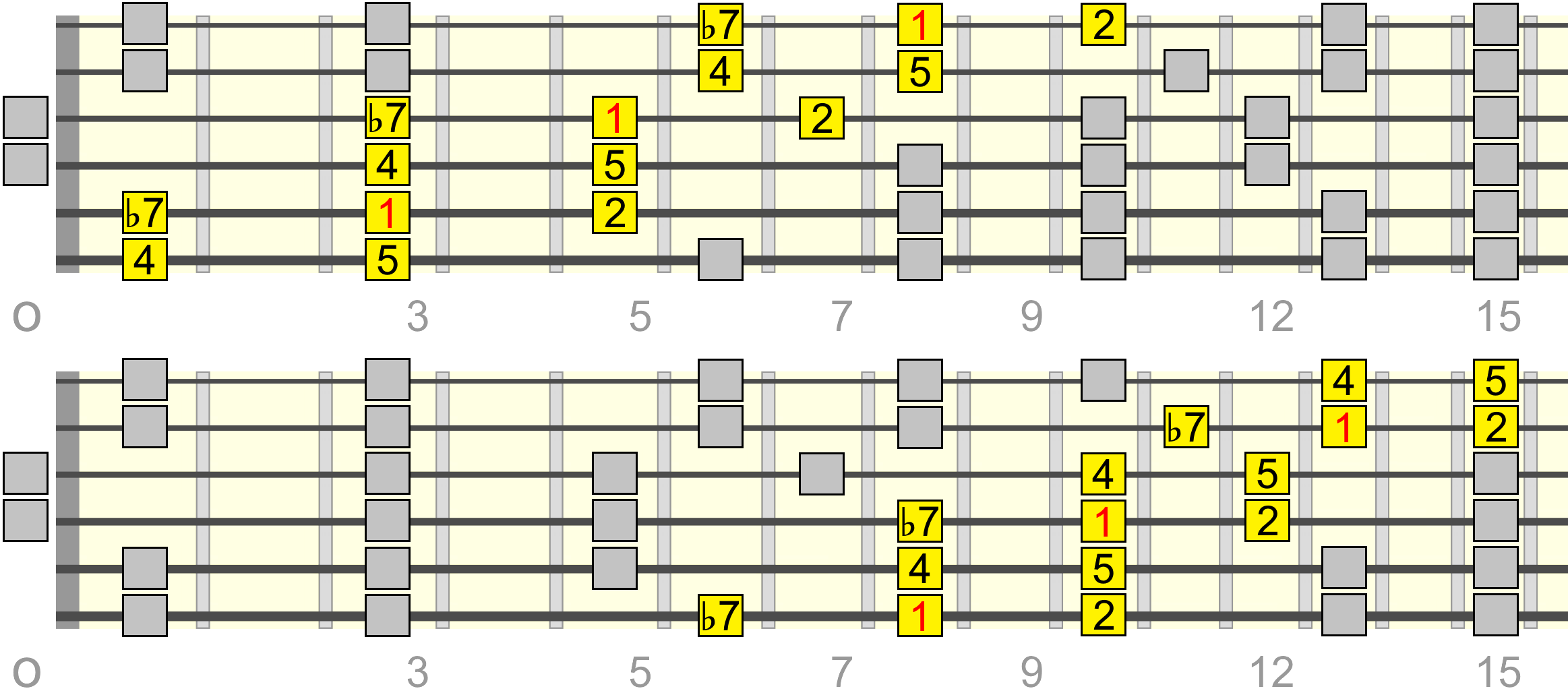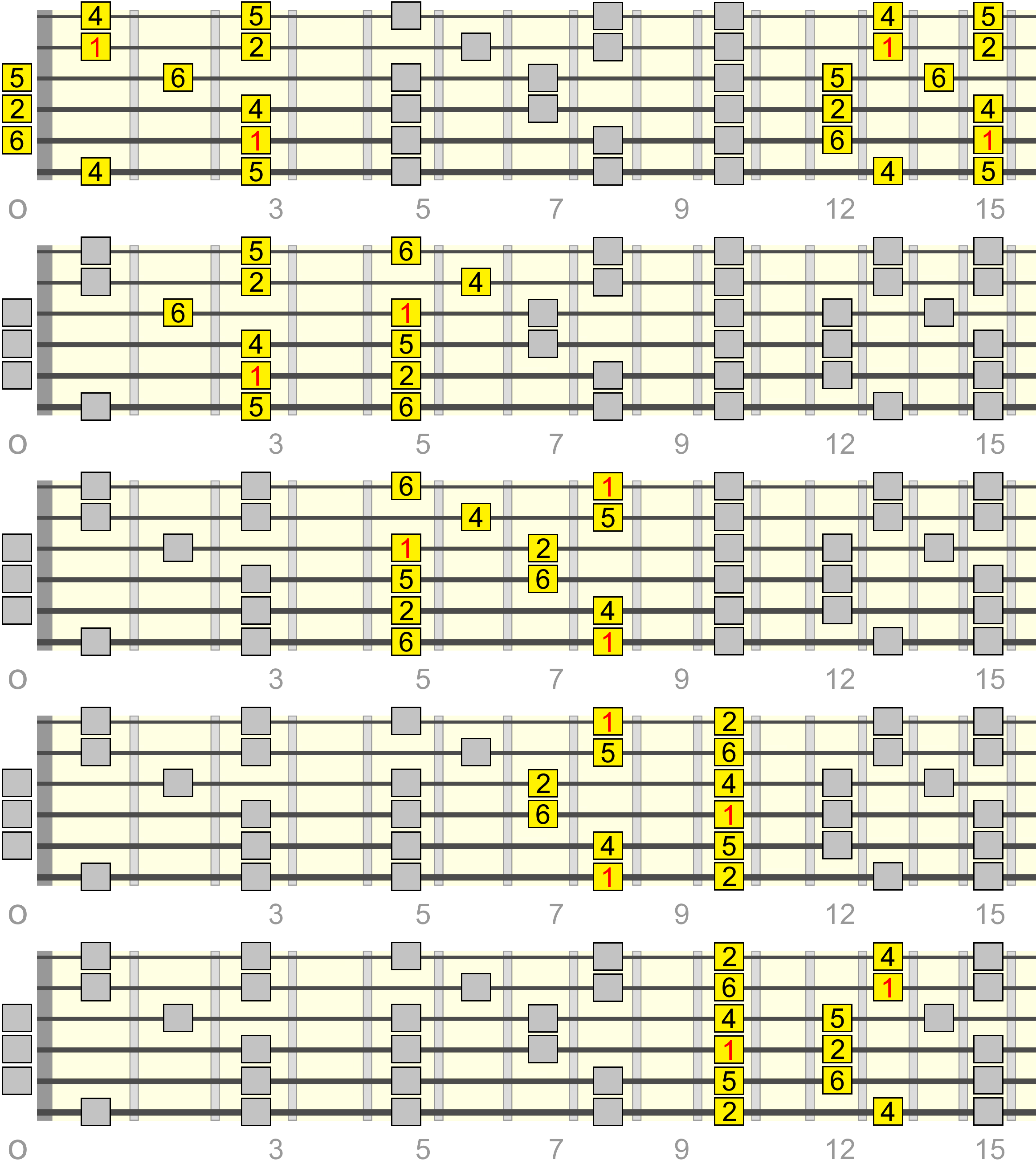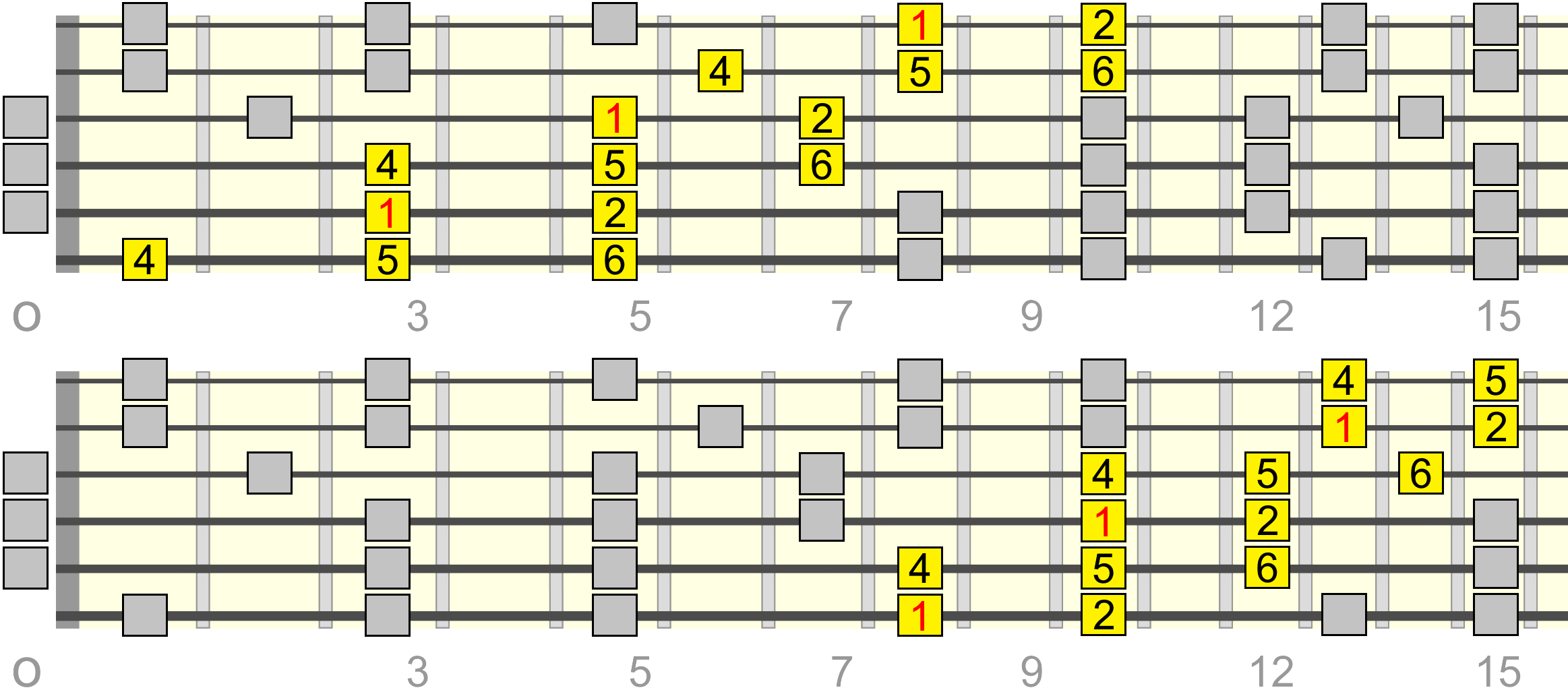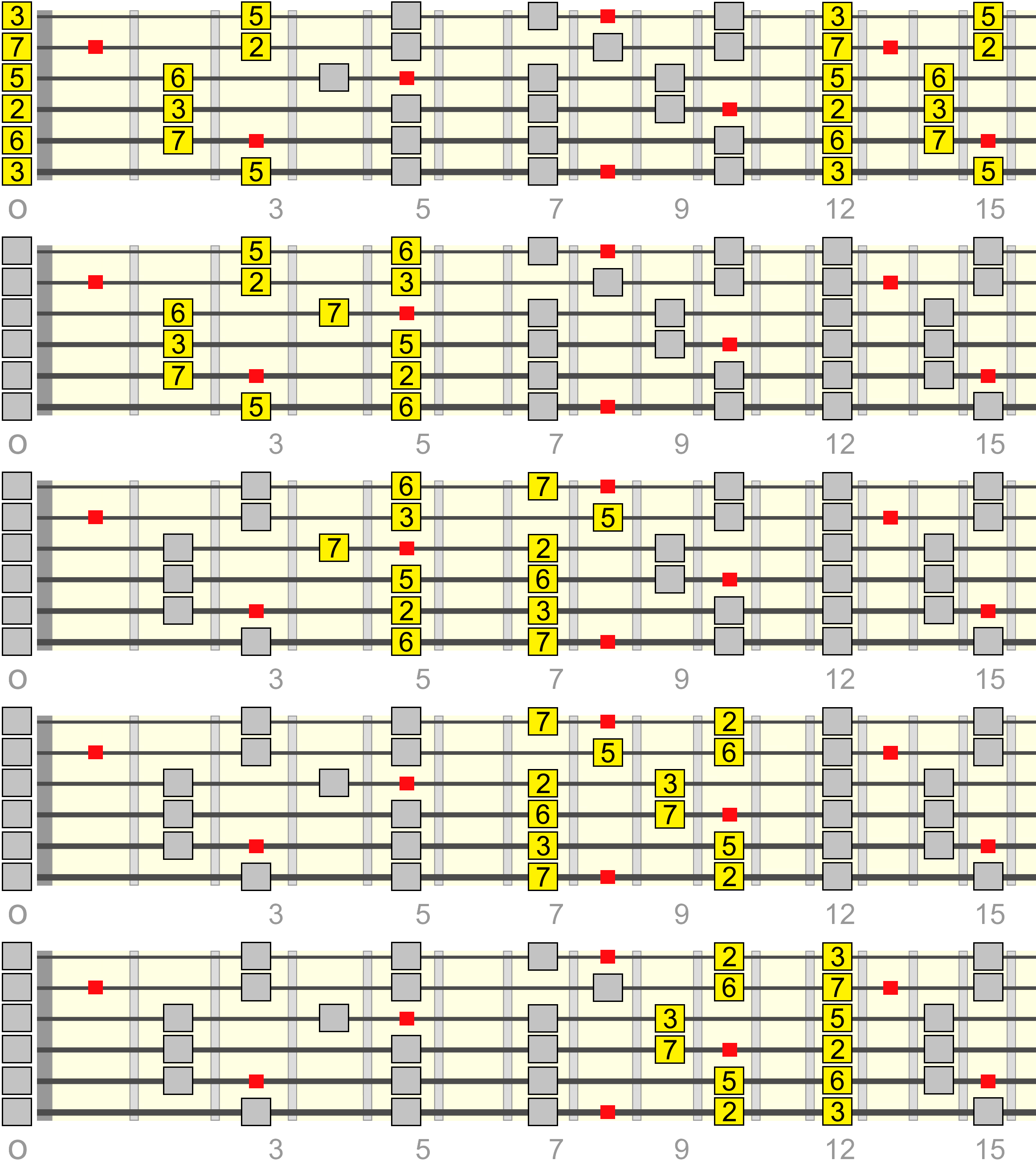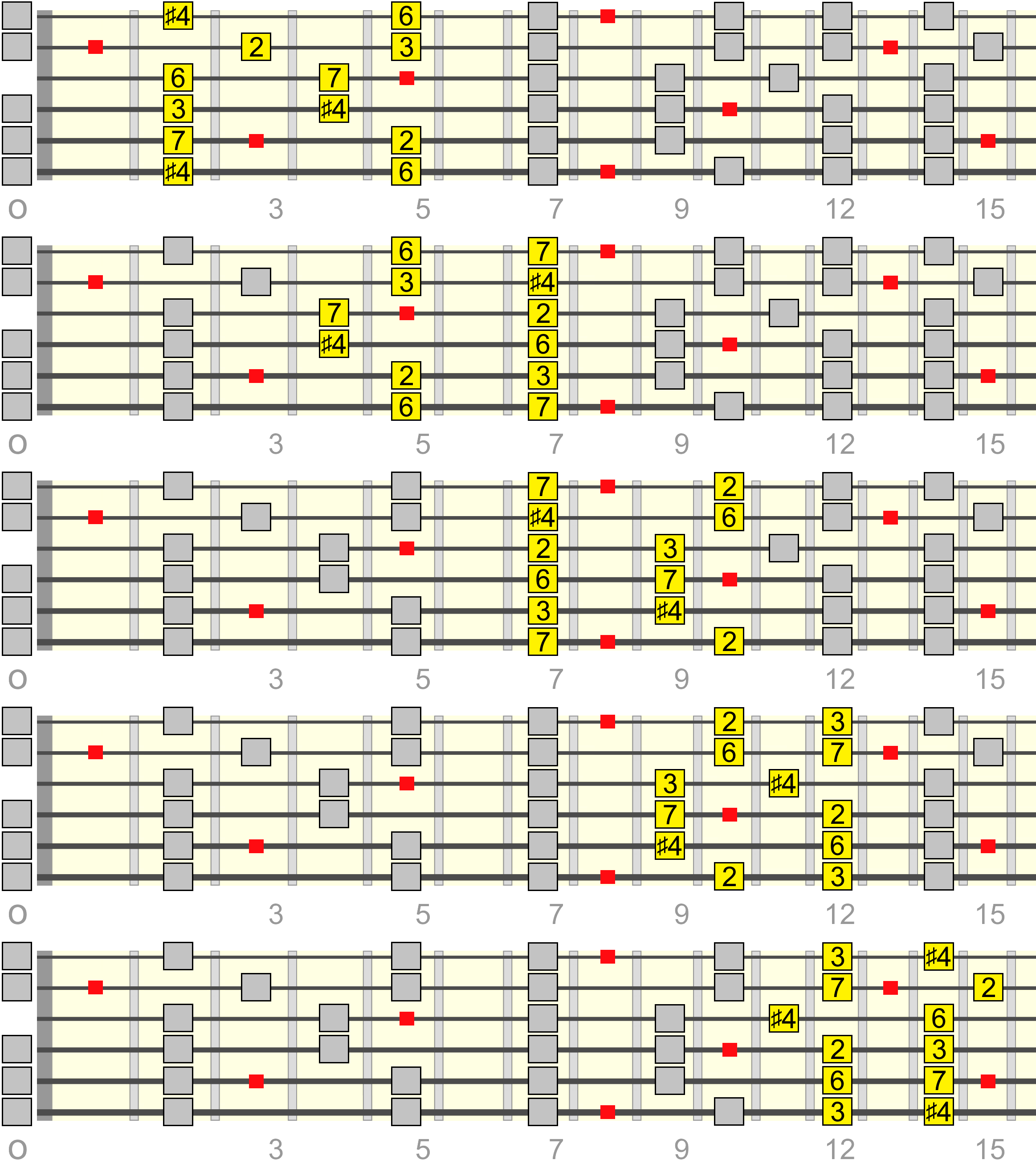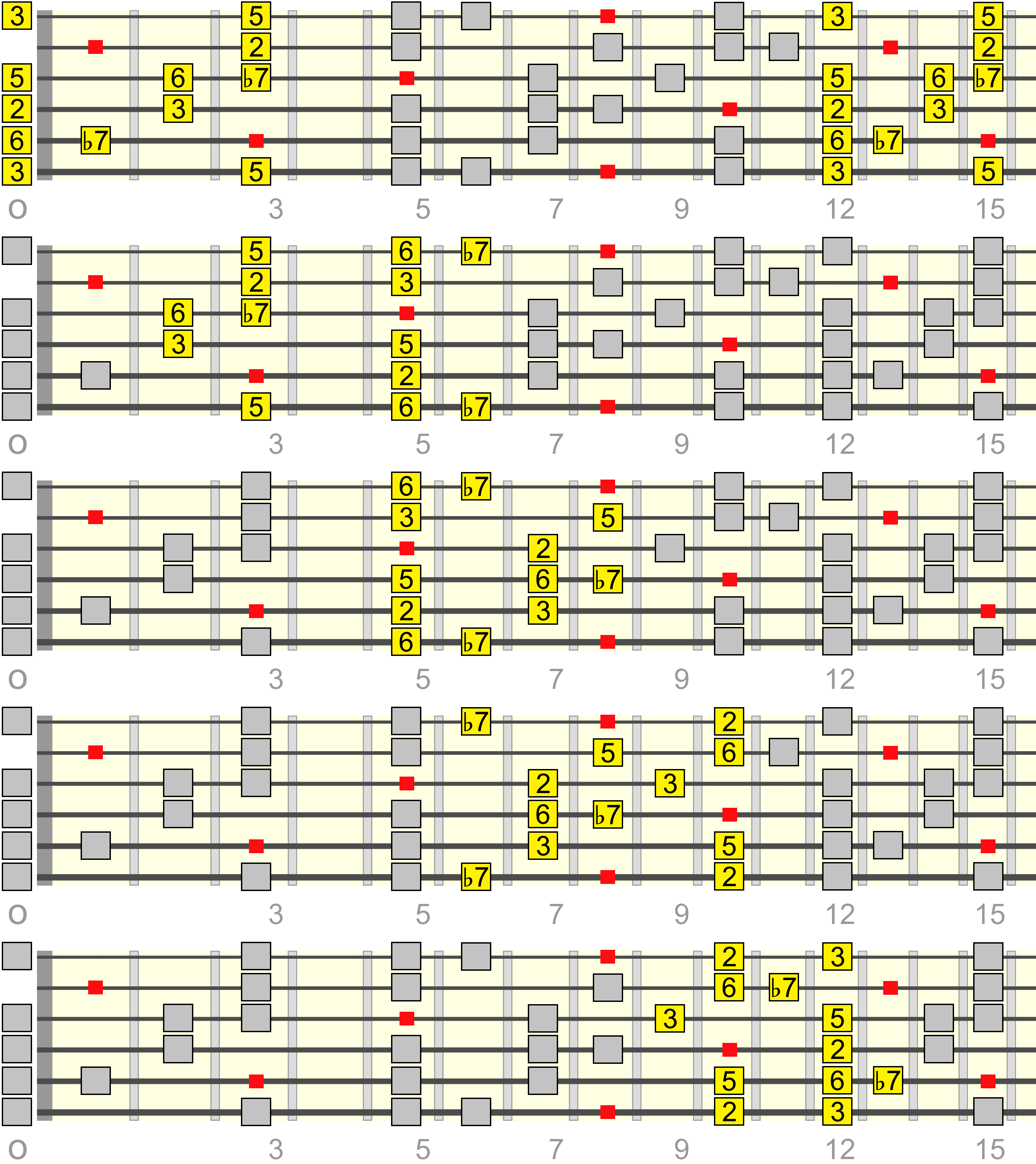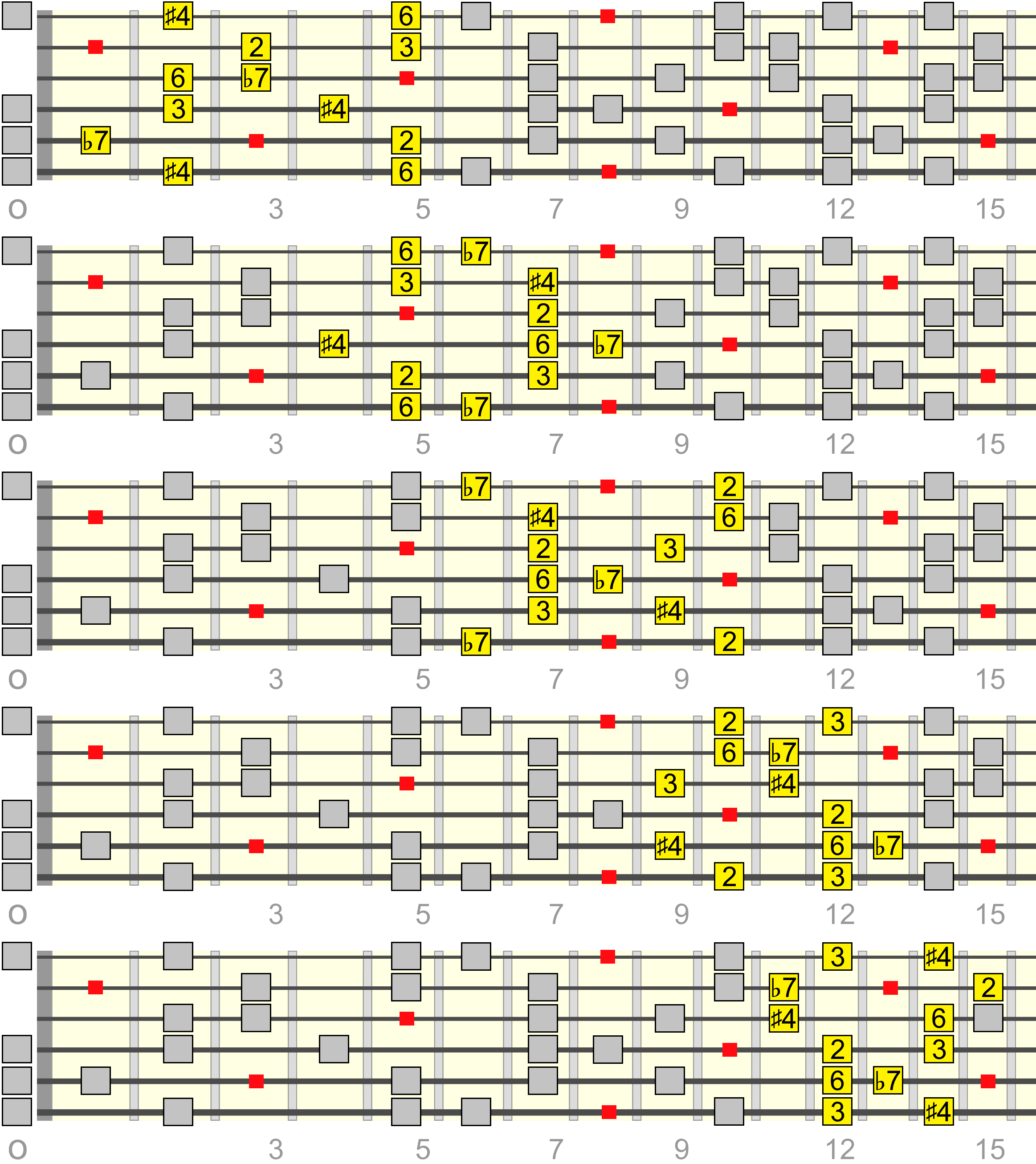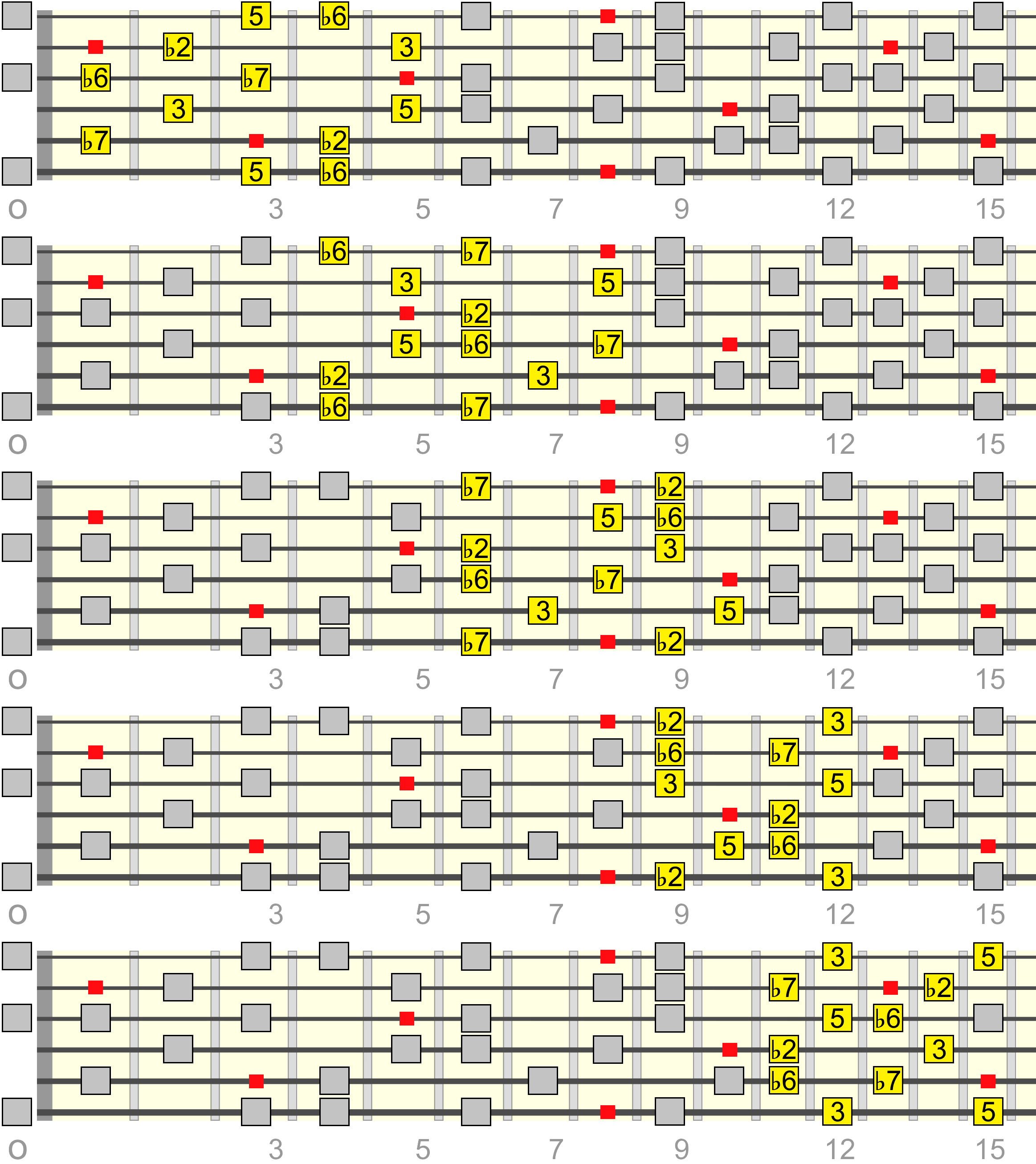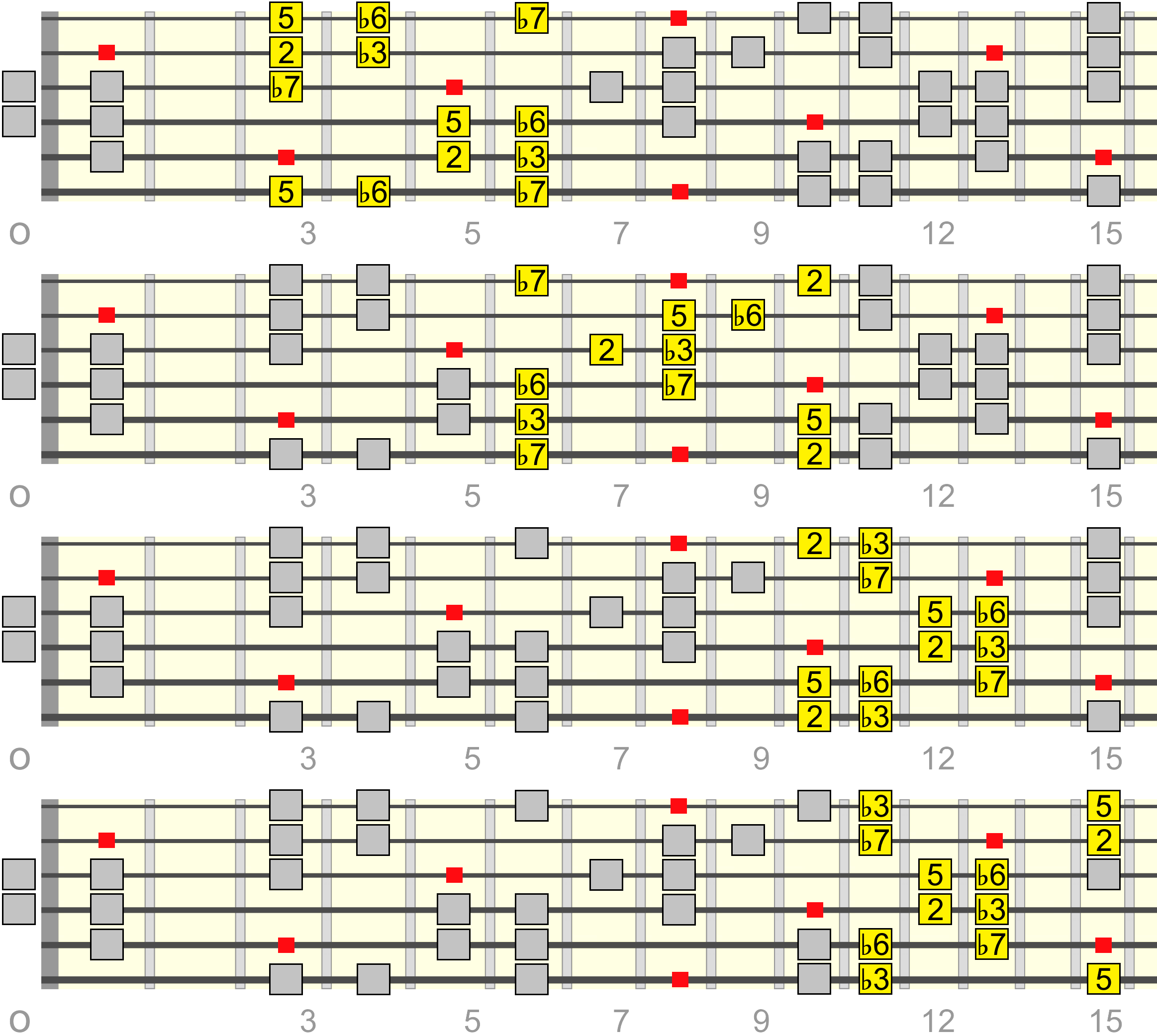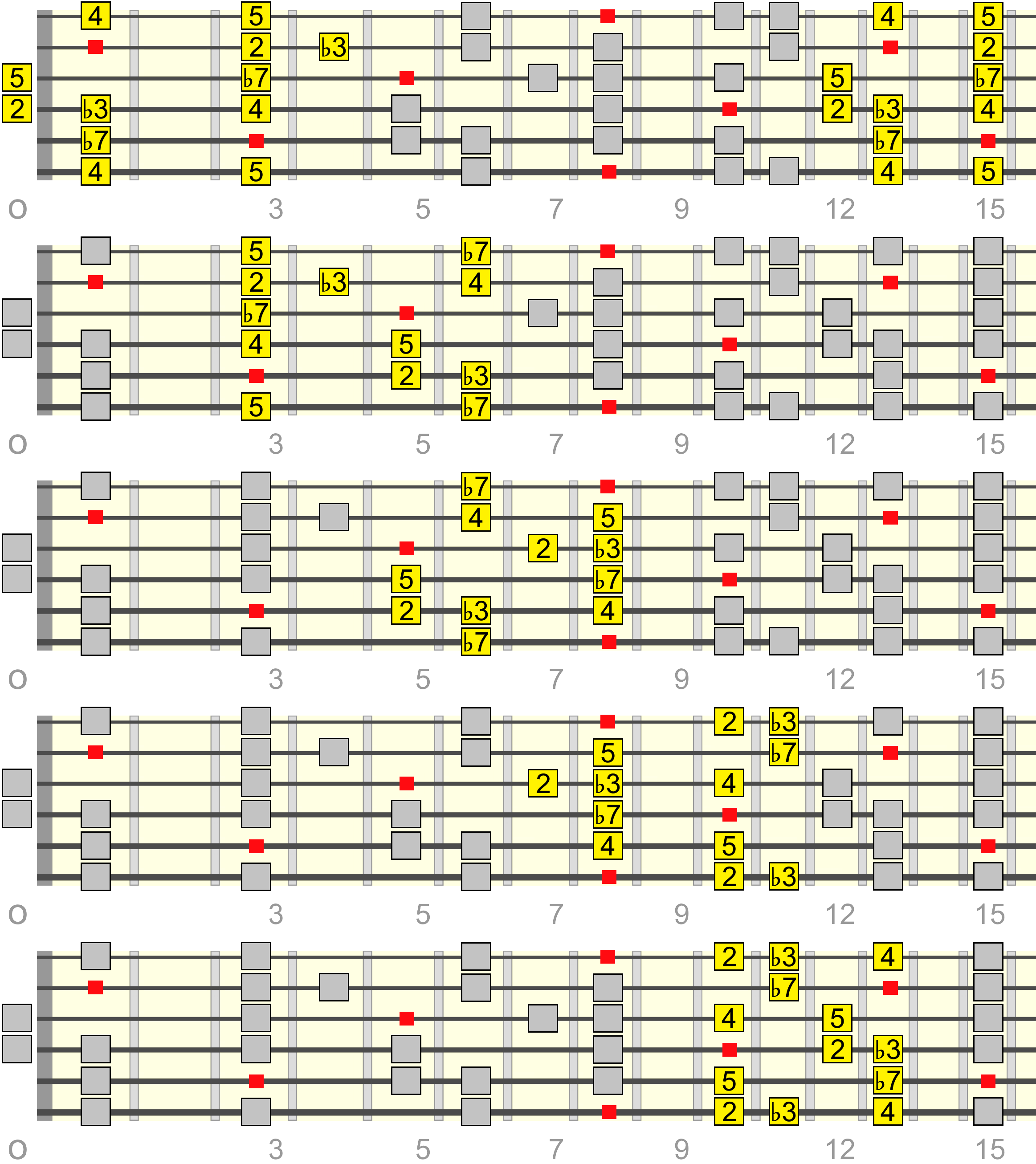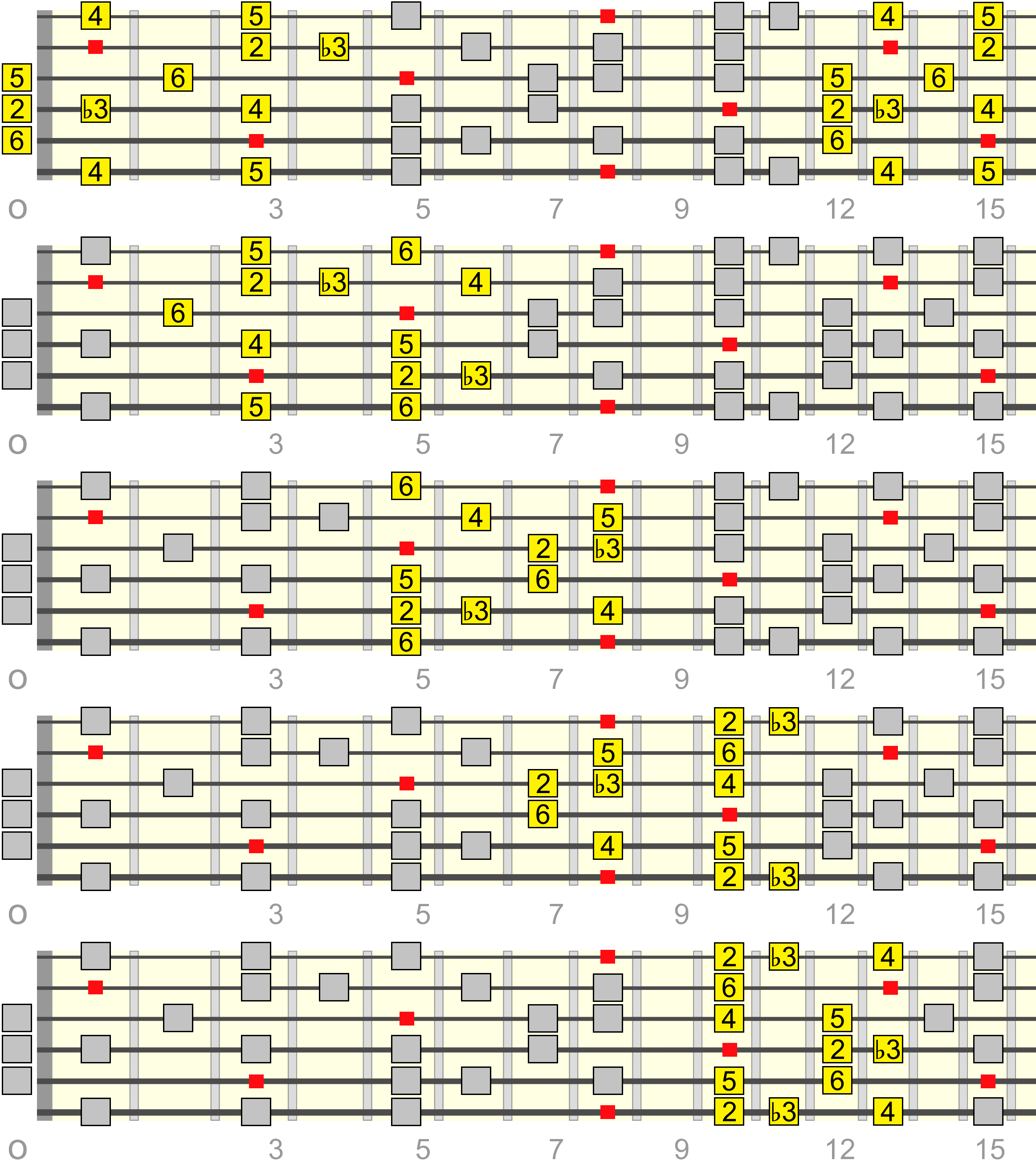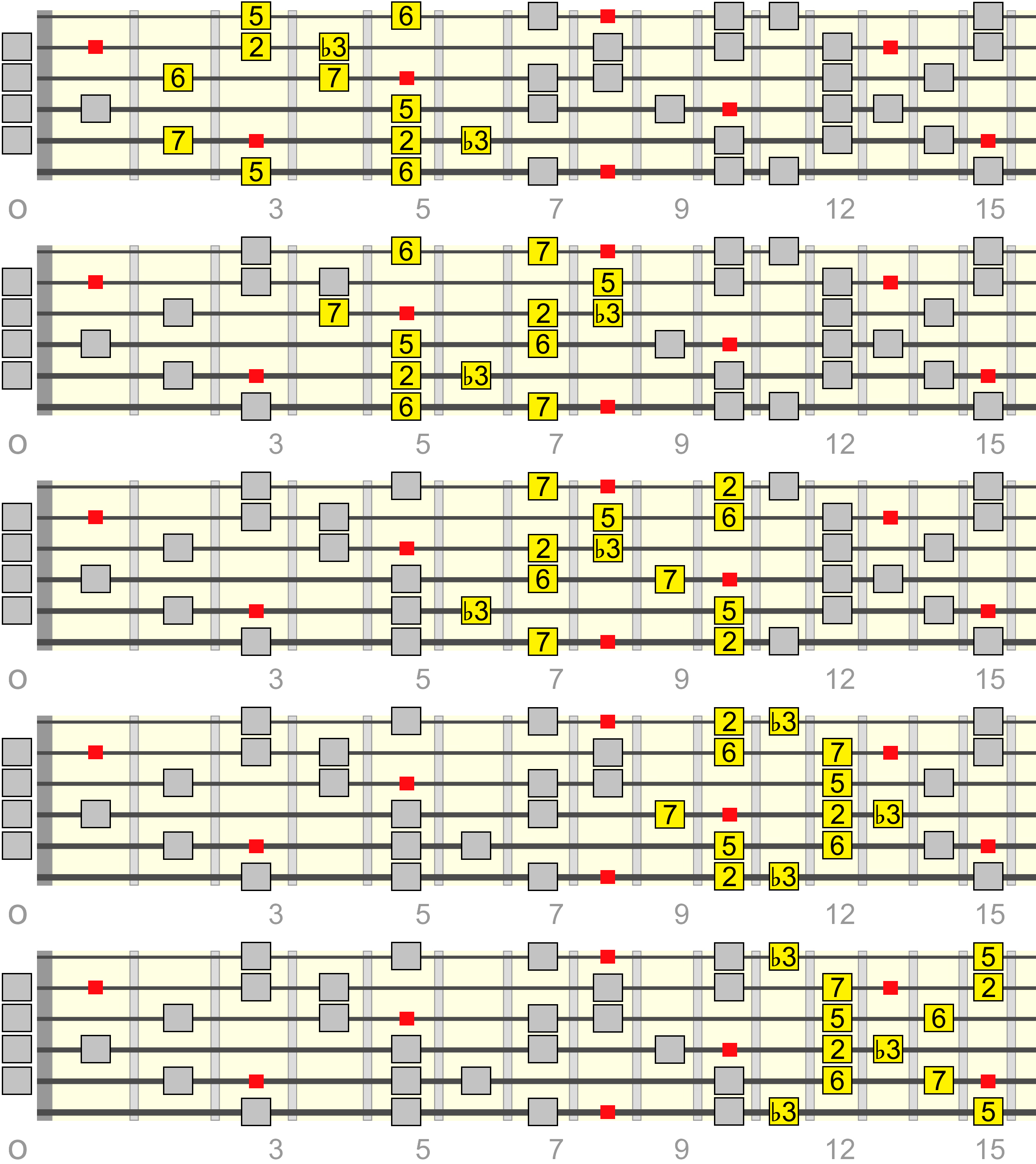Most guitarists quickly become familiar with the elementary major pentatonic and minor pentatonic scales. But there are many different pentatonic scales you can learn and use to accompany more specific chord types.
As you probably already know, pentatonic simply refers to a scale with five tones. Those five tones can theoretically be any from the twelve tone chromatic scale. This gives us a huge list of possible scales we can construct to accent certain chord qualities and their tones. But above all, it's also an economical way to develop colourful phrasing with your lead melody.
This lesson will cover some of the most usable and accessible pentatonic variations.
Scale Type: Major - Minor - Diminished - Suspended - Rootless
Why Use Pentatonic Scales?
Think of pentatonic scales as the skeleton of larger (e.g. seven-tone or heptatonic) scales to which they're native. For example, major pentatonic can be seen as a stripped down version of the major/Ionian scale, Mixolydian and other major scales.
Minor pentatonic can be seen as a stripped down version of natural minor, Dorian and other minor scales.
By combining pentatonics with fuller, seven-tone based scale phrases, we open up our solos to more phrasing pathways and variation. As pentatonic scales involve larger interval jumps, we can inject passages that sound more open, while touching on the most important chord tones.
A good way to think of these pentatonic scales is as a kind of hybrid or "in between" of arpeggios and fuller scales, each with their own related chord quality.
Major Based Pentatonic Scales
All major scales contain the root (1), major 3rd (3) and 5th (5), as these intervals make up the major triad - the foundation of major chords.
Most of the time, good old major pentatonic will be our choice of "stripped down" major scale because of its sheer versatility over common chord progressions.
Here it is in C, superimposed on to the seven-tone C major scale (leaving the 4 and 7 greyed out)...
But there are of course different major chord types, over which a slight modification of the above scale would work more effectively in touching on the relevant chord tones. This gives the below pentatonic scales a particular quality that connects with a related chord type.
Keep in mind, as well as the seventh chords mentioned below, all these pentatonic scales will also potentially work over basic major triads, since they all contain the 1, 3 and 5 at their core.
Major 7th Pentatonic Scale
Chord Quality: Major 7th (1 3 5 7 e.g. Cmaj7) because of its major 7th (7) interval.
Native Scales: Ionian/major. By omitting the 4 and 6 from the seven-tone major scale, we get a more "direct" maj7 sound. You could also think of it as a major 7th arpeggio with an added 2nd along the way.
Take note of the Full, Box and Wide tabs on the below diagrams, as they show you different ways to break down the pattern.
C Major Track
Dominant 7th Pentatonic Scale
Chord Quality: Dominant 7th (1 3 5 ♭7 e.g. C7) because of its minor 7th (♭7) interval.
Native Scale: Mixolydian. Could be thought of as a dominant 7th arpeggio with an added 2nd giving it some linear connection.
C7 Track
It's also typically used for phrasing in blues progressions, along side the minor/major pentatonic and six-tone blues scales.
Major ♯4 Pentatonic Scales
Here we have two variations on the same chord-scale flavour. For both...
Chord Quality: Major 7th (1 3 5 7 e.g. Cmaj7) and major 7th, augmented 11th (1 3 5 7 ♯11 e.g. Cmaj7♯11) chords.
Native Scale: Lydian, characterised by its ♯4.
The first variation involves the major 6th (6).
C Major Track
The second variation involves the major 7th (7). This one is a little trickier to finger in sequence, because of the jump between the ♯4 and 7. However, that jump offers some nice phrasing potential...
Dominant ♯4 Pentatonic Scale
Chord Quality: Dominant 7th (1 3 5 ♭7 e.g. C7) and dominant 7th, augmented 11th (1 3 5 ♭7 ♯11 e.g. C7♯11) chords.
Native Scale: Lydian Dominant, typically used as a jazzier alternative to Mixolydian (because of the raised 4th), the standard dominant scale.
C7 Track
Dominant ♭2 Pentatonic Scale
Chord Quality: Dominant 7th (1 3 5 ♭7 e.g. C7) and dominant 7th flat 9th (1 3 5 ♭7 ♭9 e.g. C7♭9) chords.
Native Scale: Phrygian Dominant. The minor 2nd (♭2) interval gives the dominant chord more tension - naturally effective over the V (5) chord in minor key progressions (or whenever you want a darker tension in your dominant).
C7 Track
Minor Based Pentatonic Scales
All minor scales contain the root (1), minor 3rd (♭3) and 5th (5), as these intervals make up the minor triad - the foundation of minor chords. The most common pentatonic choice for minor chords is... *drum roll*... minor pentatonic!
Here it is superimposed on to C natural minor (the 2 and ♭6 are greyed out)...
But as with major, there are pentatonic scales more intimately paired with certain minor chord types, based on the intervals being voiced.
As with major, keep in mind that all the below scales can potentially work over basic minor triads, as well as the seventh types mentioned.
Minor Major 7th Pentatonic Scale
Chord Quality: Minor major 7th (1 ♭3 5 7 e.g. CmM7) chords.
Native Scales: Harmonic minor and melodic minor. Both these scales are characterised by their use of the major 7th (7). The major 7th gives the minor sound a more haunting tension. This pentatonic variant can be seen as regular minor pentatonic with a raised 7th.
With harmonic minor...
C Minor Track
The same scale superimposed on to melodic minor (raise the 6th degree of harmonic minor)...
Minor 6th Pentatonic Scale
Chord Quality: Minor 6th (1 ♭3 5 6 e.g. Cm6) chords.
Native Scales: Dorian and Melodic Minor scales. Both these minor scales involve the natural 6th (6).
Starting with Dorian...
C Minor Track
Alongside melodic minor (raise Dorian's 7th)...
Minor ♯4 Pentatonic Scale
Chord Quality: Minor 7th (1 ♭3 5 ♭7 e.g. Cm7) chords. It's also great over powerchords in a heavy metal context.
Native Scales: Dorian ♯4 is this scale's seven-tone parent. However, it'll also complement natural minor, (regular) Dorian and other minor scales that use a ♭7.
C Minor Track
Diminished Pentatonic Scales
Beyond the diminished triad (1 ♭3 ♭5), which both scales below will cover, there are two main seventh qualities of diminished chord...
- Half diminished, also known as "minor seven flat five" (1 ♭3 ♭5 ♭7).
- Diminished seventh, which is like lowering the seventh from the above (1 ♭3 ♭5 ♭♭7). The double flat seventh is itself called a diminished seventh interval.
Half Diminished Pentatonic Scale
Chord Quality: Minor 7th, diminished 5th (1 ♭3 ♭5 ♭7 e.g. Cm7♭5)
Native Scale: Locrian. We're omitting the 4 and ♭6 (greyed out) from the fuller scale.
Cm7♭5 Track
Diminished 7th Pentatonic Scales
Two variations here, taken from the same native heptatonic scale...
Chord Quality: Diminished 7th (1 ♭3 ♭5 ♭♭7 e.g. Cdim7)
Native Scale: Super Locrian, also known as the altered scale. Here we've omitted the ♭4 and ♭6 from the fuller scale.
Cdim7 Track
Chord Quality: Diminished 7th (1 ♭3 ♭5 ♭♭7 e.g. Cdim7)
Native Scale: Super Locrian, as before. Here we've omitted the ♭2 and ♭4 from the fuller scale.
Cdim7 Track
Suspended Pentatonic Scales
Suspended chords are where the 3rd (major or minor) is omitted and, in its place, a 2nd (suspended 2nd or "sus2") or 4th (suspended 4th or "sus4") is used.
The below pentatonic scales work especially well over sus4 based chords.
Suspended ♭7 Pentatonic Scale
Chord Qualities: Suspended 4th (1 4 5 e.g. Csus4) chords. It'll also touch on its seventh and 9th variation (e.g. C7sus4, C9sus4).
Interestingly, it can be seen as playing major pentatonic from the chord's ♭7 (e.g. play B♭ major pentatonic over Csus). So you don't have to learn an entirely new pattern - simply reposition major pentatonic accordingly...
Csus Chord Track
Suspended 6th Pentatonic Scale
Chord Qualities: Same as above. Can be seen as playing major pentatonic from the chord's 4th (e.g. play F major pentatonic over C)...
Csus Track
Rootless Pentatonic Scales
All the scales above involve the base major, minor or diminished triad (or the suspended base in the case of the last two), which includes the root (1).
However, we can omit this tone to free up our fingers for additional pentatonic colour. While this may seem counter-intuitive, since the root is considered a strong foundation of any chord or scale, in most cases it will be substantially covered by the bass and/or backing harmony.
Without that root reference, some of these "rootless" scales can be a little more difficult to visualise and position. But try to at least identify where the root would be in the pattern, so you can pin the position of the scale to the root chord you're playing over.
In the diagrams below, I've placed a small red square where the root would be... but try not to play it for now ;)
Some examples...
Major 13th Pentatonic Scale
So called because it makes up all the tones of a maj13 chord (minus the root).
The difference between playing this chord in pentatonic form as opposed to arpeggio form is the scalar ordering of the tones in the sequence (pentatonic - 2 3 5 6 7). In contrast, arpeggios are stacked strictly in 3rds (1 3 5 7 9 13). Don't worry, this difference can be covered in more depth another time!
This rootless pentatonic scale can be used over maj7, maj9 and maj13 very comfortably. You might notice that it's simply the major pentatonic pattern repositioned on the 5th of the chord (e.g. play G major pentatonic over C).
C Major Track
Major 13th ♯11 Pentatonic Scale
This one's pretty easy to visualise. Simply play the regular major pentatonic pattern a whole step up from the chord root (e.g. over C play D major pentatonic).
This gives us a Lydian vibe, touching on the ♯4 in combination with other natural colour tones. Works very naturally over the IV chord in major keys (or the ♭VI in a natural minor key). It can be thought of as an edgier major 13th sound (i.e. compared to the sweeter maj13 expression above).
C Major Track
Dominant 13th Pentatonic Scale
Similar to the maj13 pattern, we just lower the 7th. A very rich but natural dominant sound...
C7 Track
Dominant 13th ♯11 Pentatonic Scale
A full, yet economical expression of the Lydian Dominant sound. A jazz staple for dominant chords...
C7 Track
Altered Dominant Pentatonic Scale
Involves both the ♭2 and ♭6 over a dominant seventh base. A very tense and exotic dominant sound...
C7 Track
Natural Minor (♭13) Pentatonic Scale
If we omit the root and 4th from the seven-tone natural minor (Aeolian) scale, we get a particularly raw expression of the tonic minor key chord that establishes the home for so many minor key songs.
The jump in intervals from the absent tones creates a natural phrasing line that demonstrates the power of pentatonics.
C Minor Track
Minor 11th Pentatonic Scale
This will cover most minor chords - especially versatile in its colour. 11th is "chord speak" for the 4 in scale terms. A very natural extension tone in a minor context.
C Minor Track
Minor 13th Pentatonic Scale
An expression of Dorian and Melodic Minor in equal measure...
C Minor Track
Minor Major 13th Pentatonic Scale
Directly gives us that tense major 7th interval within an extended minor context...
C Minor Track
Final Notes
Hopefully, by exploring these pentatonic patterns, in combination with their native heptatonic scales (and of course a little experimentation), you can hear new phrasing ideas jump out at you. The omission of tones is about creating new melodic pathways through related chord qualities.
One of the conveniences of pentatonic scales is that those occasional interval jumps/skips, whether it be from a couple of tones we've omitted from the fuller scale, or even the root itself, can create a kind of "ready made" expression that connects naturally to the chord quality you're accompanying or wish to flesh out (e.g. over a simple triad). That kind of hybrid arpeggio/scale sound is a sound in its own right - a little linear, a little vertical.
While this list is by no means exhaustive (there are too many five-tone combinations to bore you with!), it will cover you in most playing situations. And creating from it can become almost effortless once you learn to see these penatonic patterns as superimposed on to their parent patterns or chord shapes. The implied tones are already there, we've just selected them more frugally in this case.
A grand combination of chord shapes, arpeggios, pentatonics and heptatonics is the key collective aid to rich soloing with endless phrasing potential.
We'll be sure to drill into more specific detail in other parts. In the meantime, thank you for your attention!


